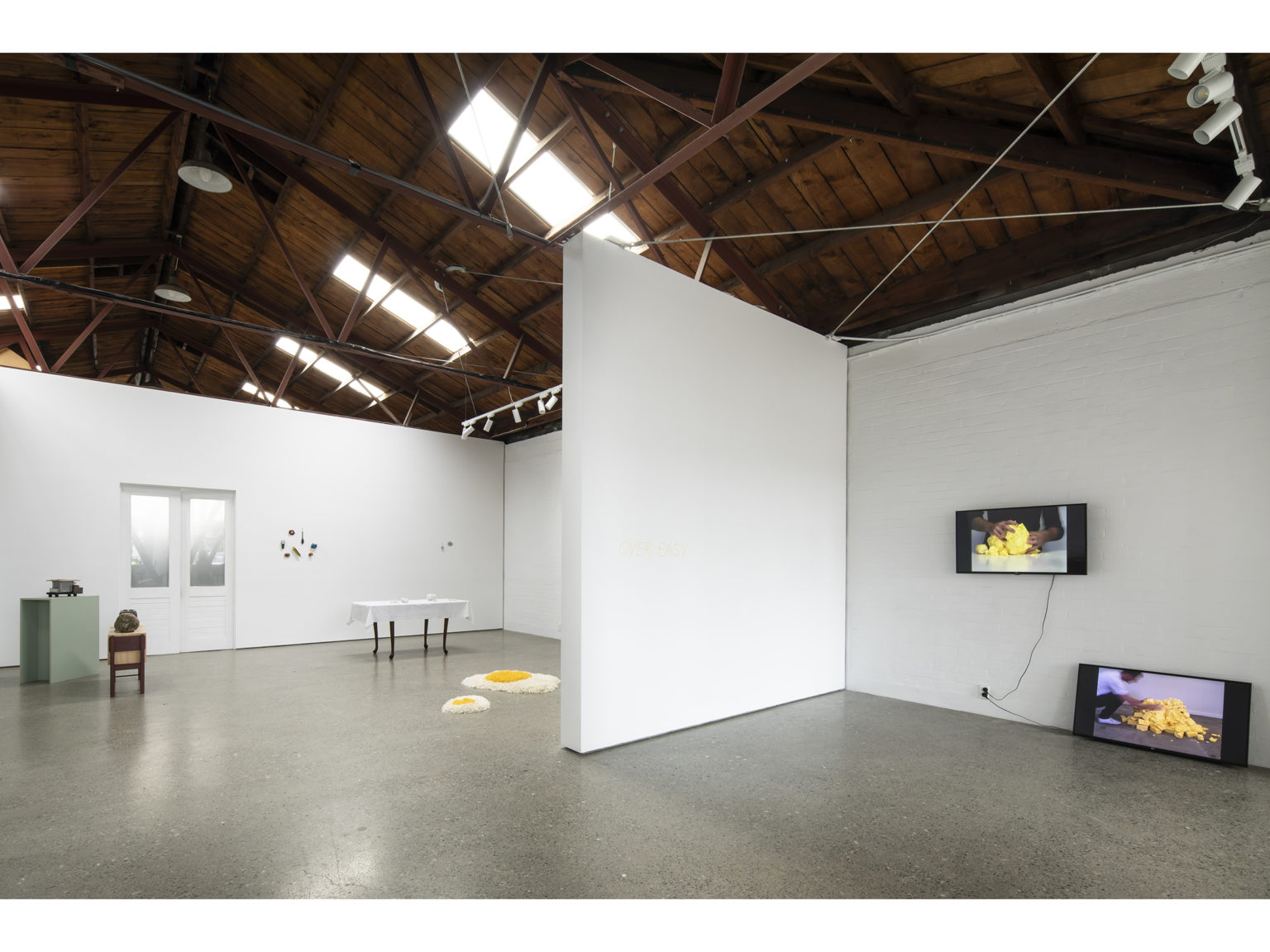

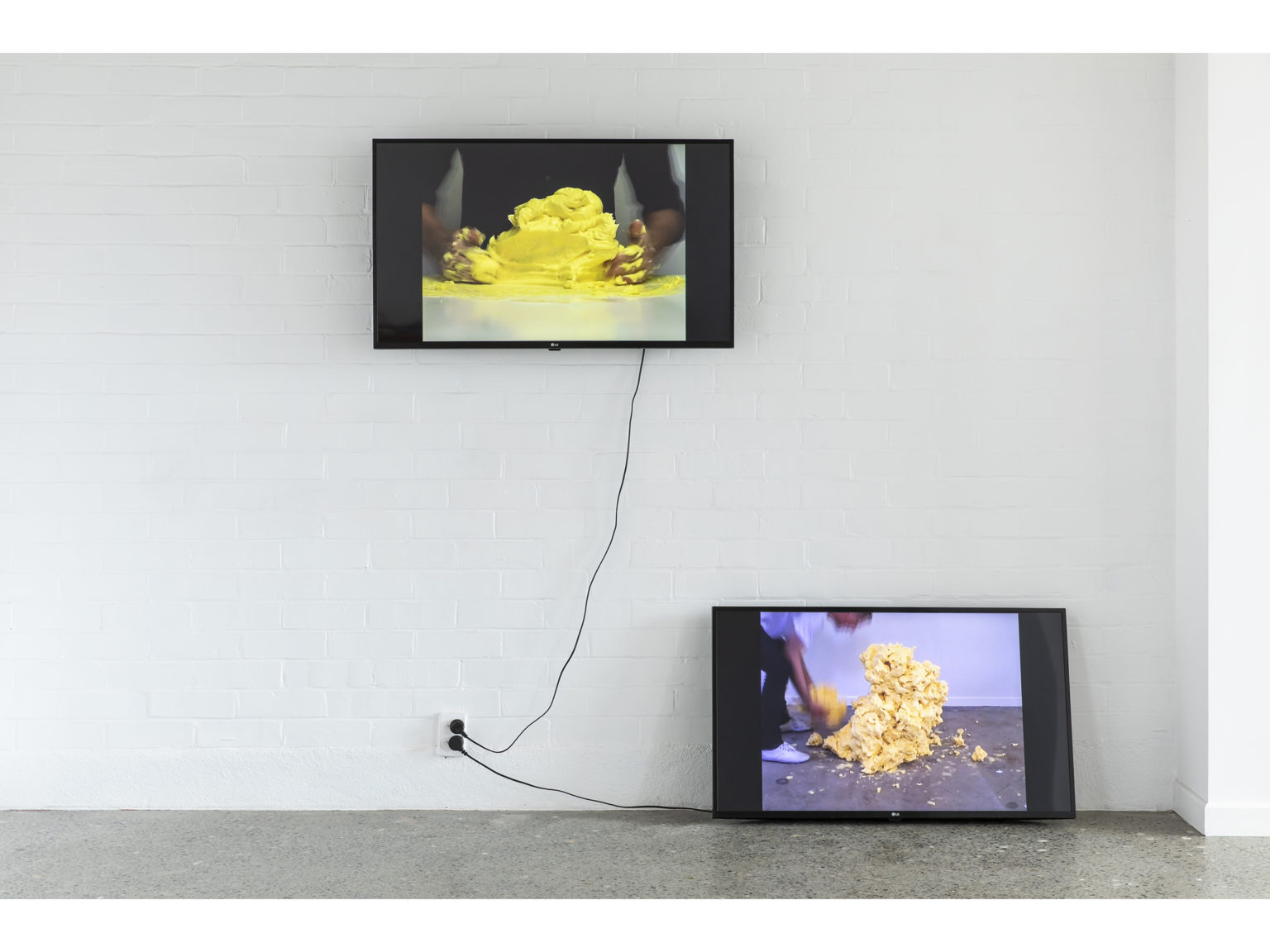
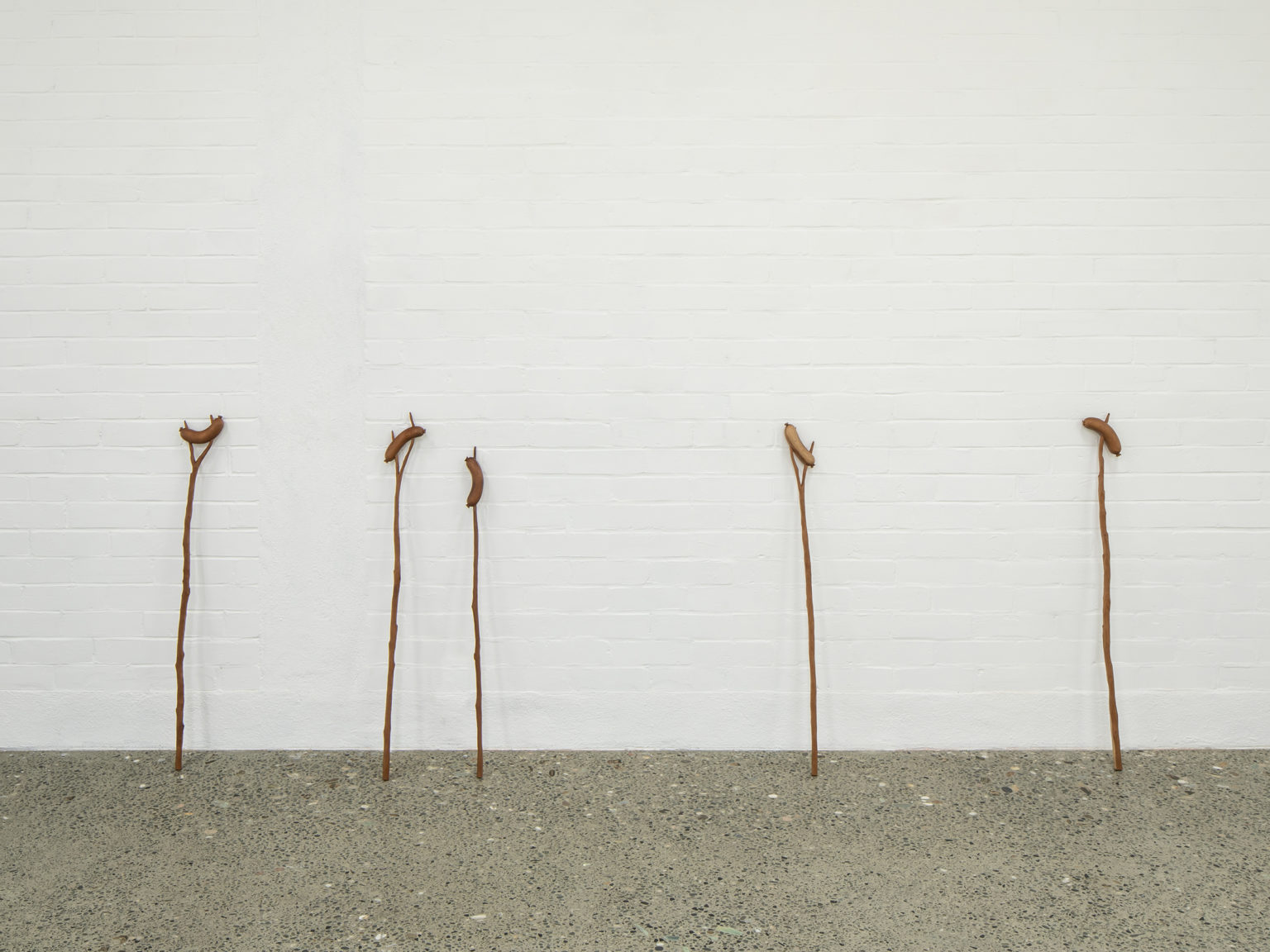
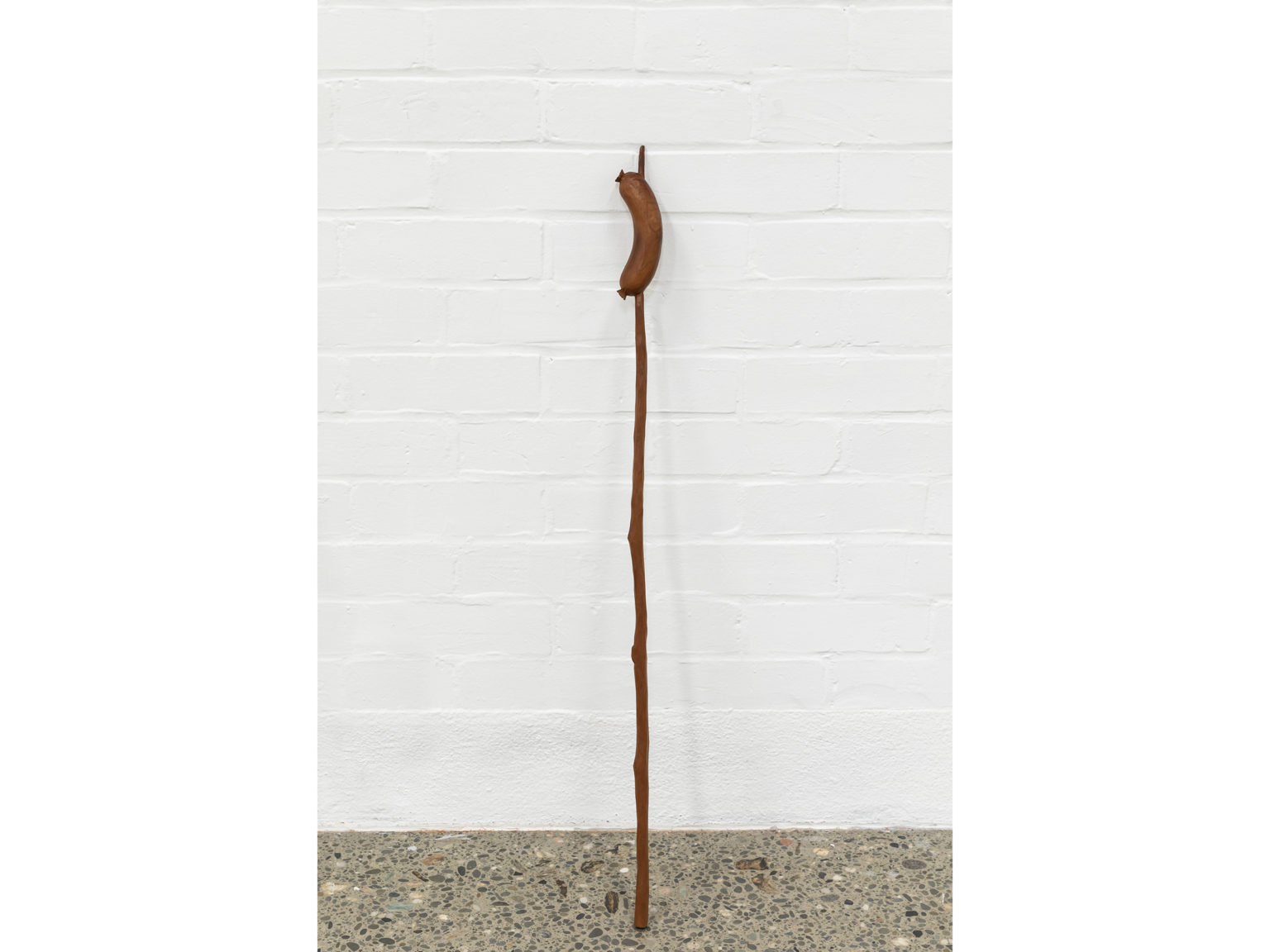
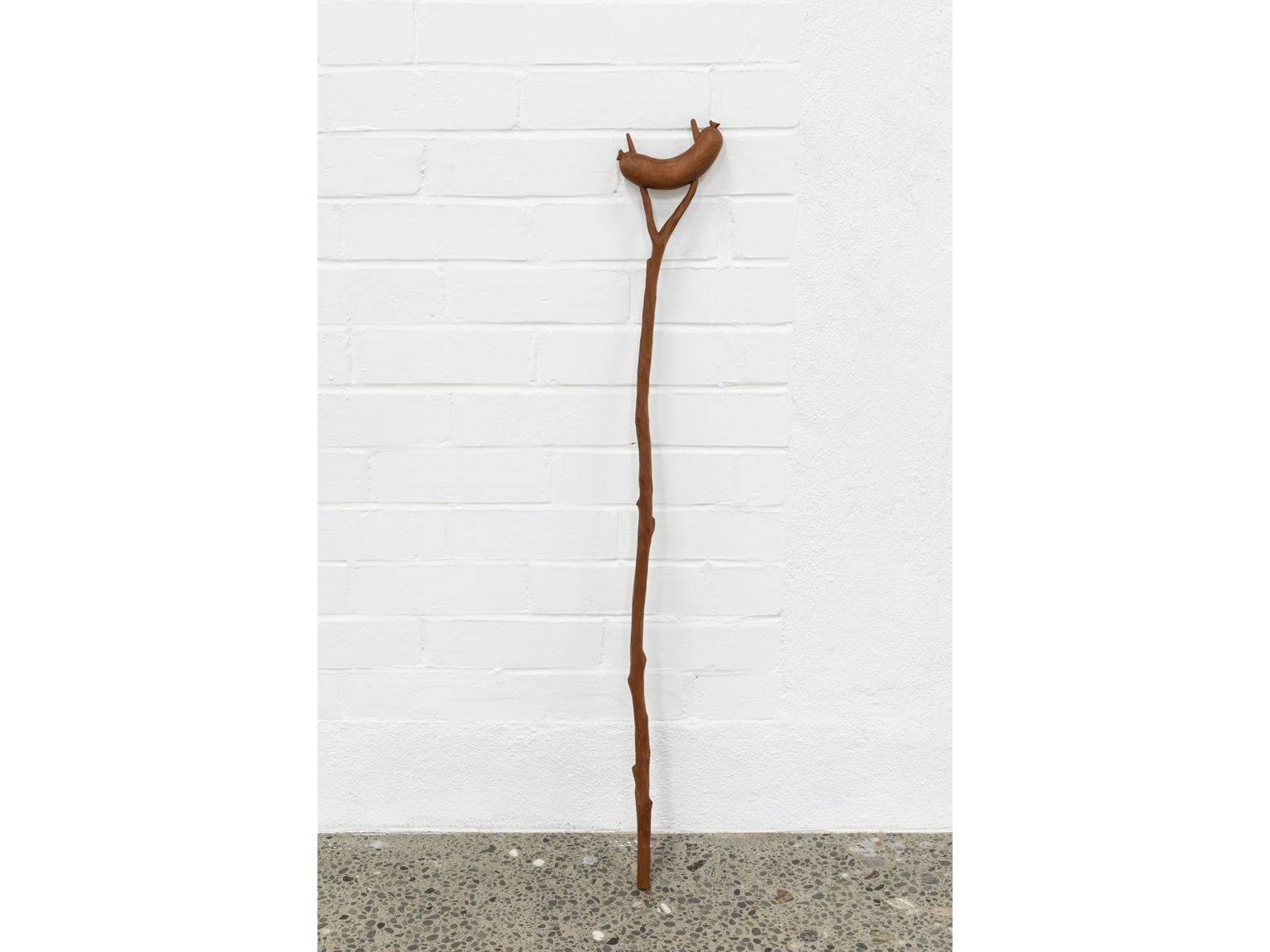

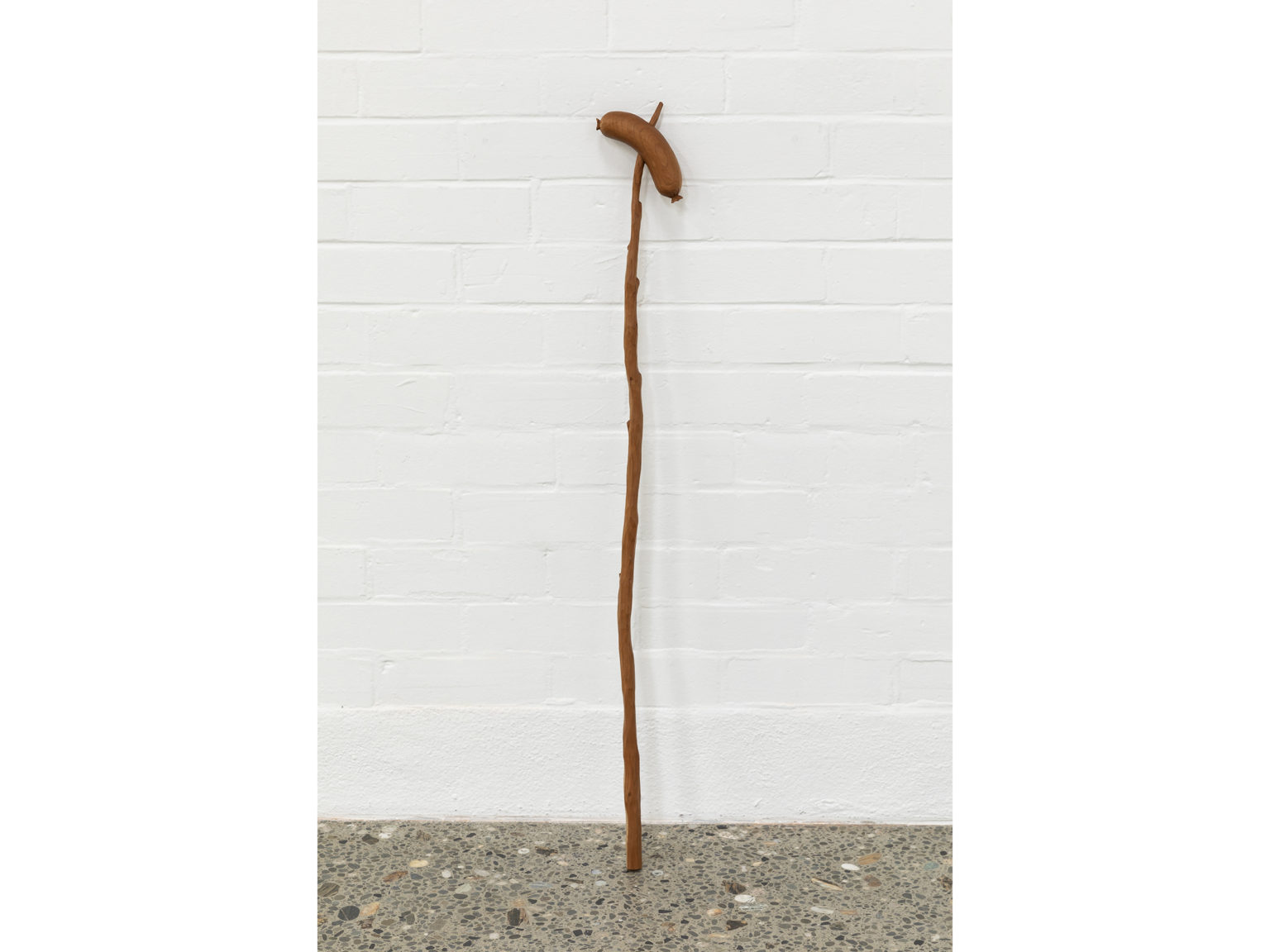
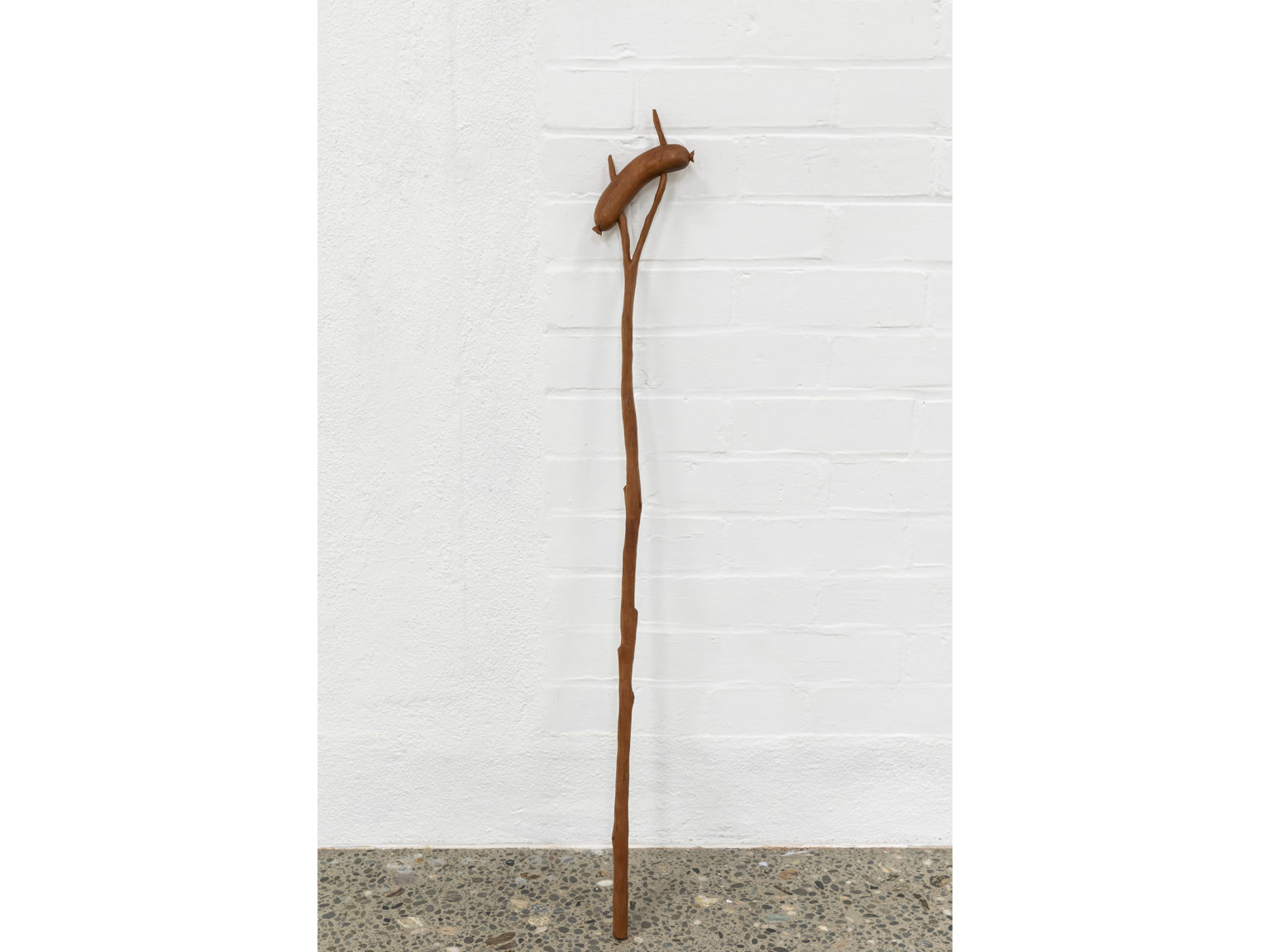
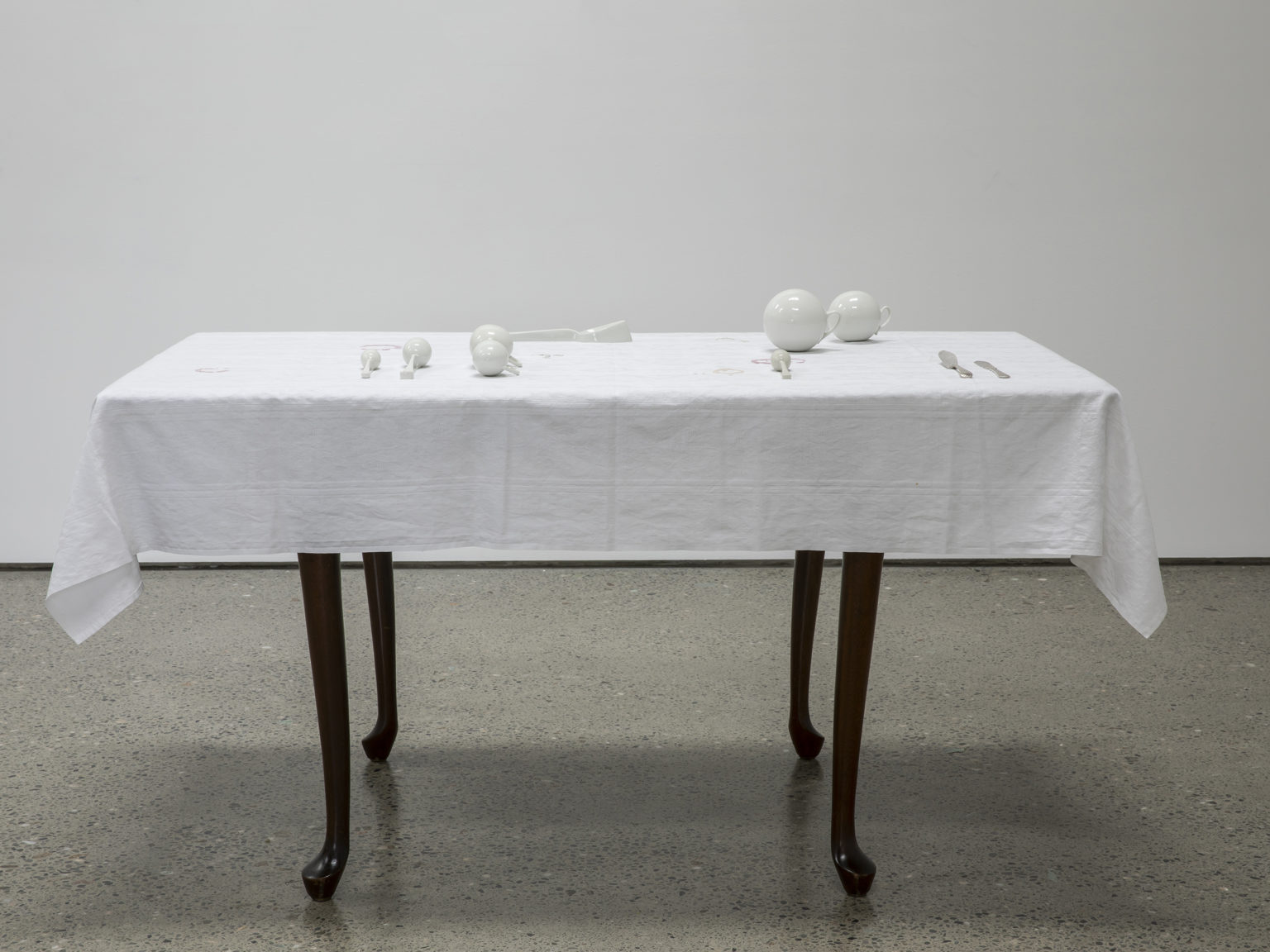
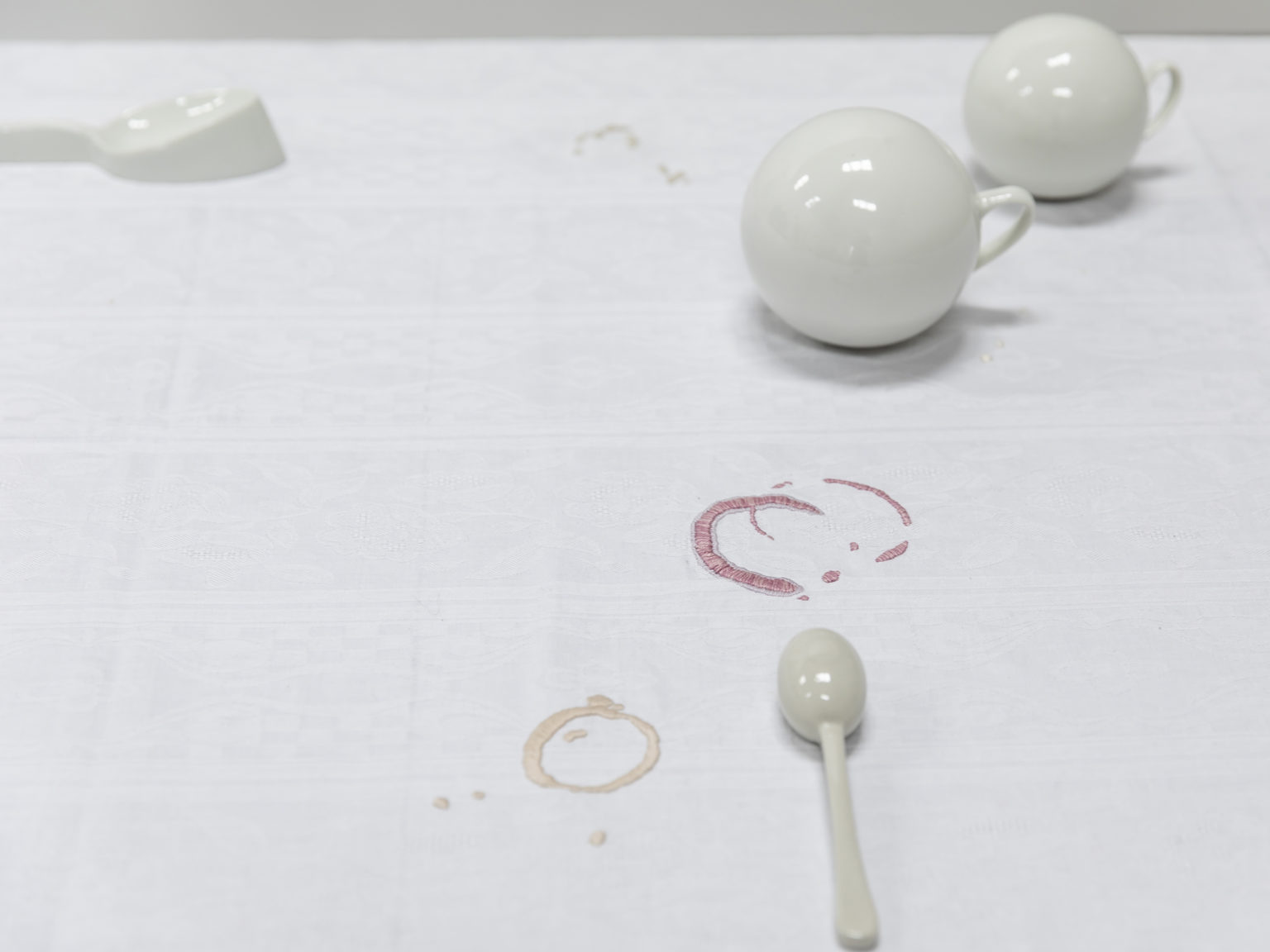
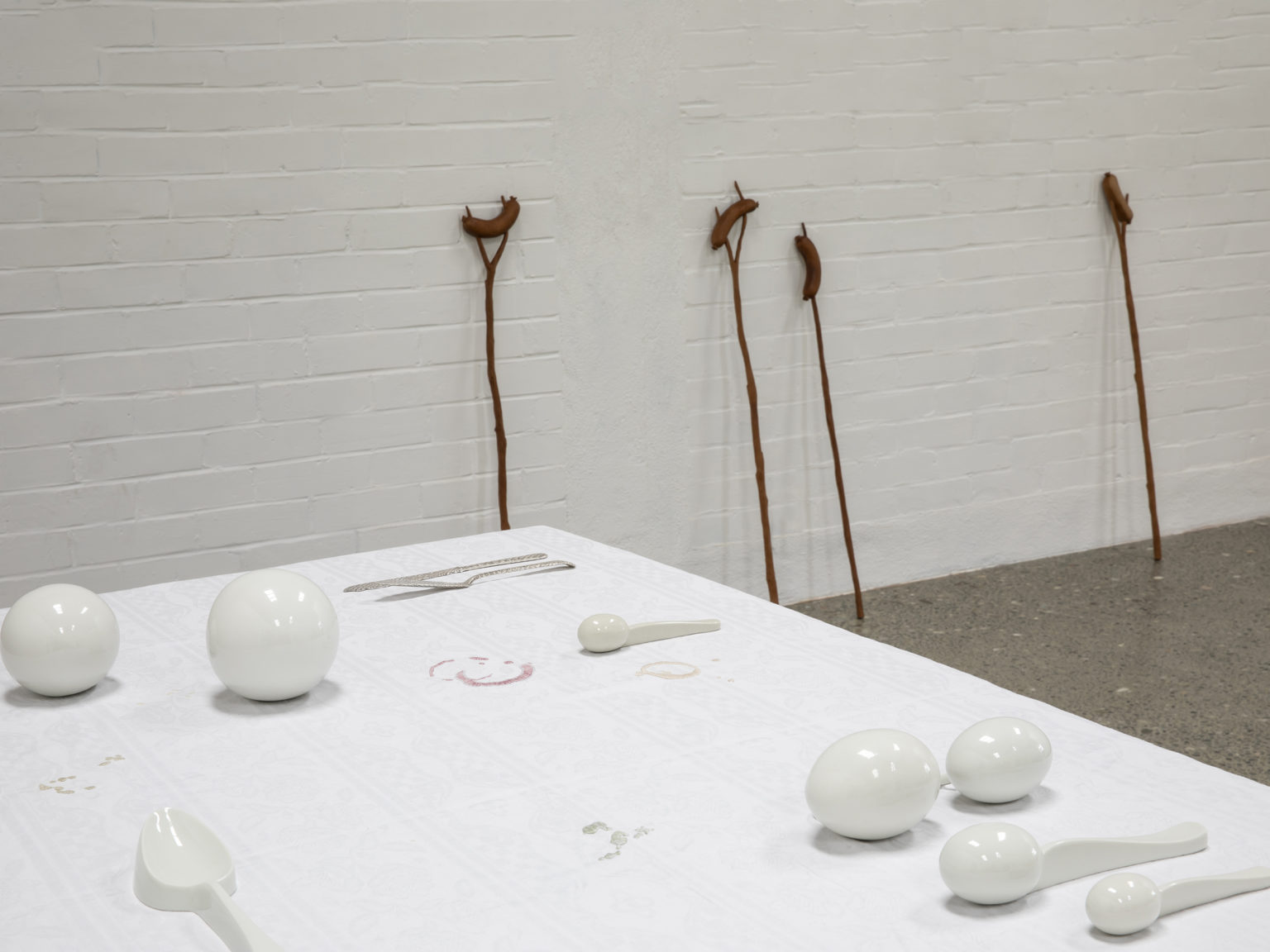
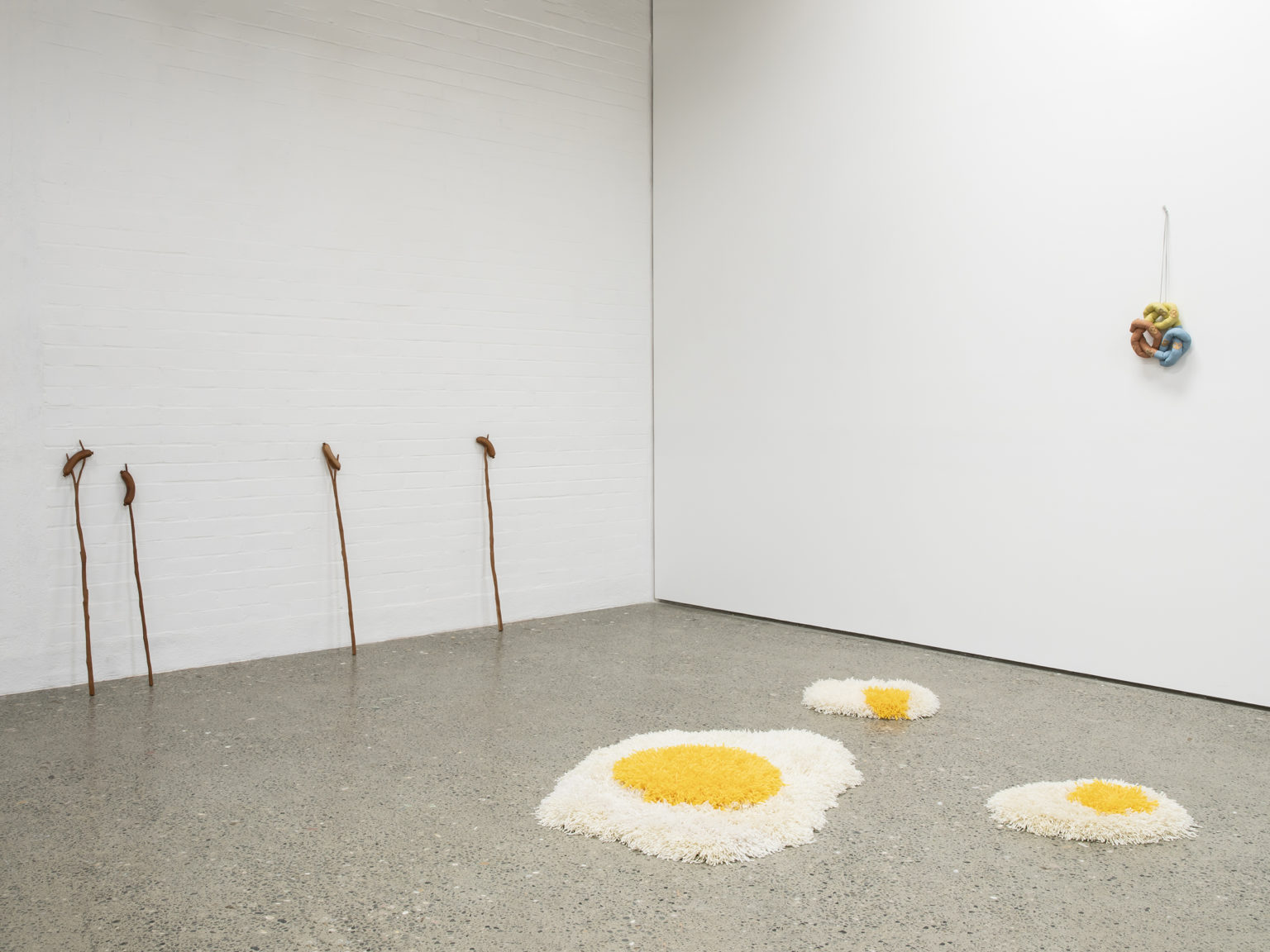
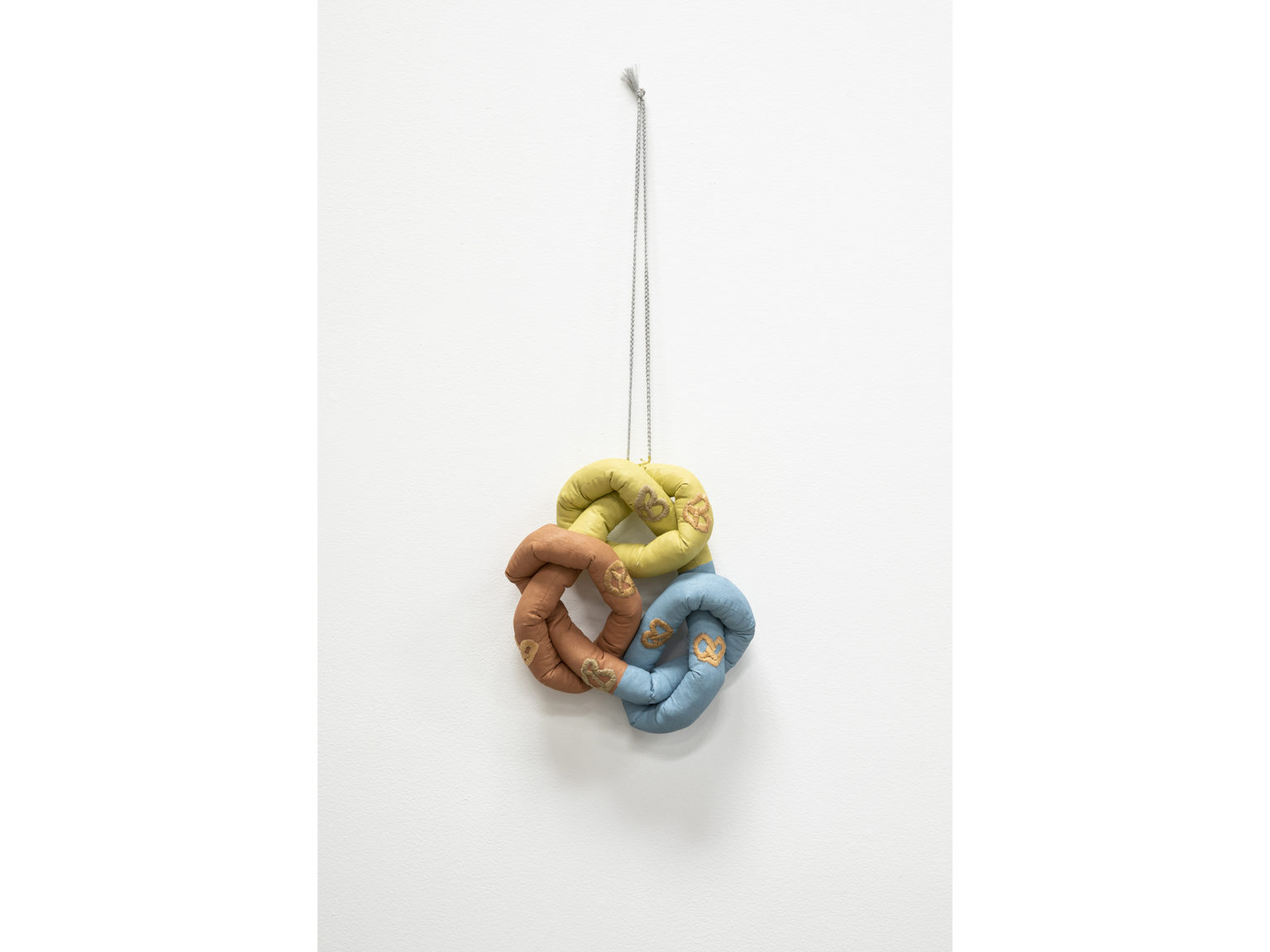
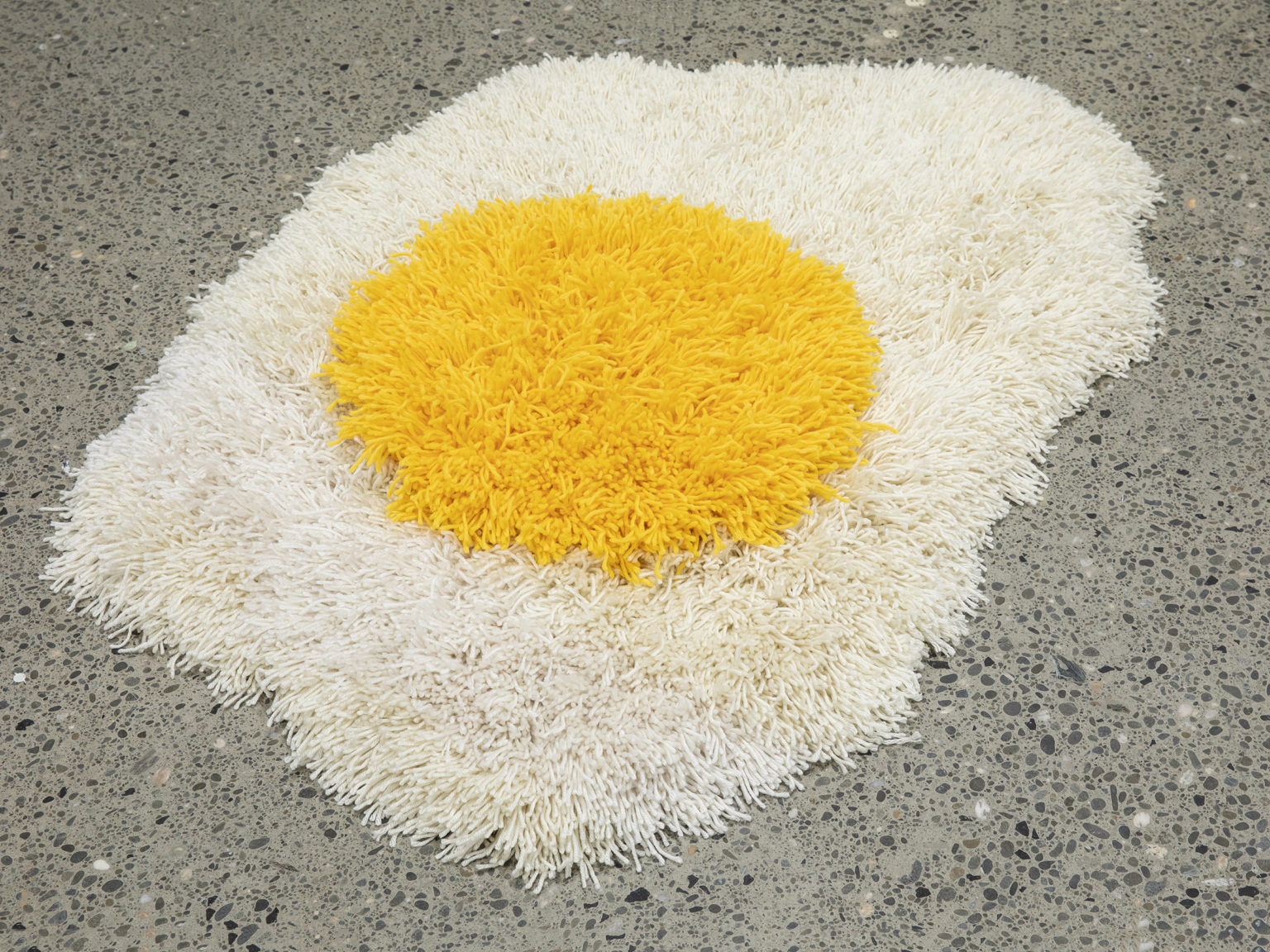
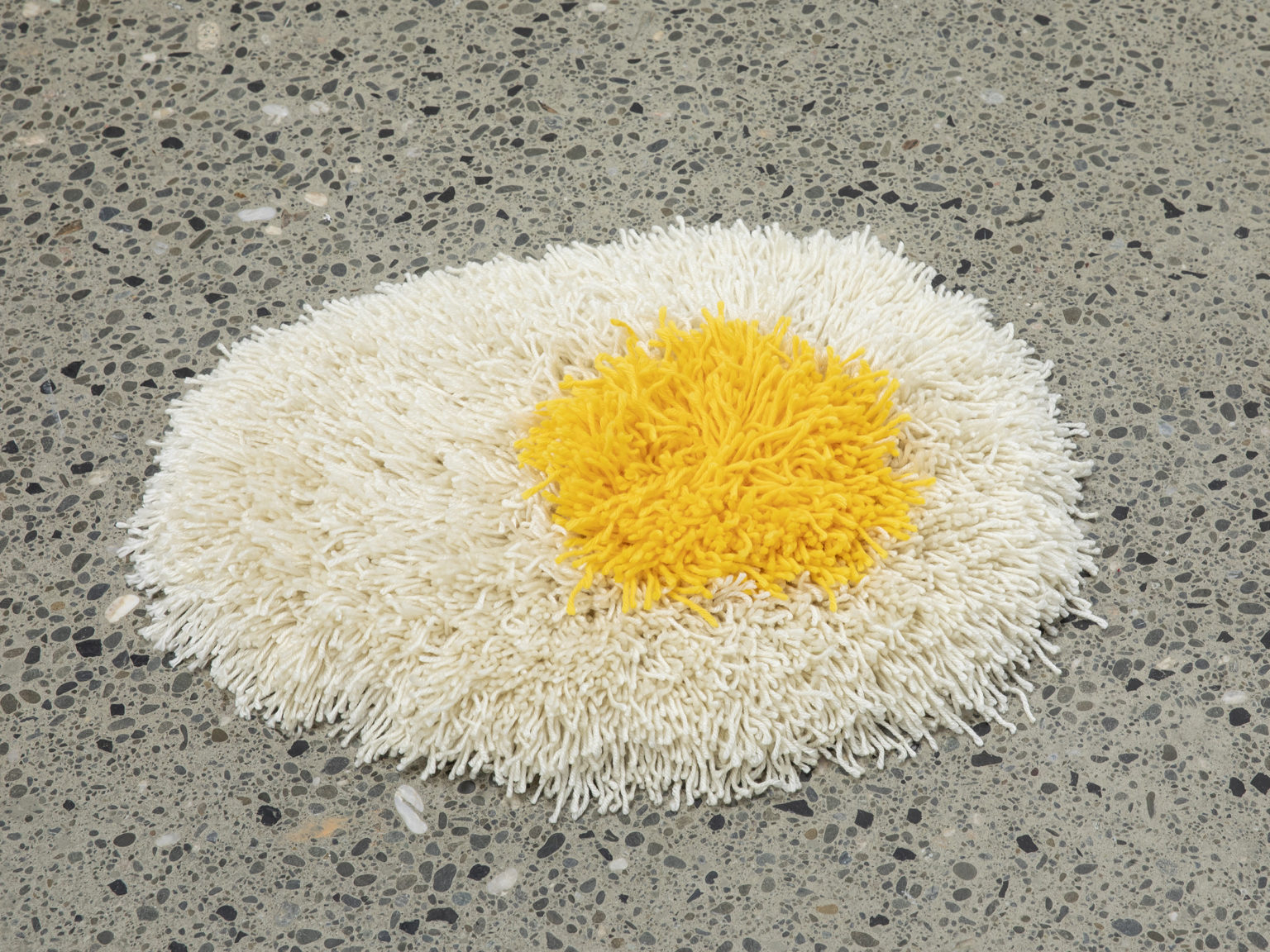
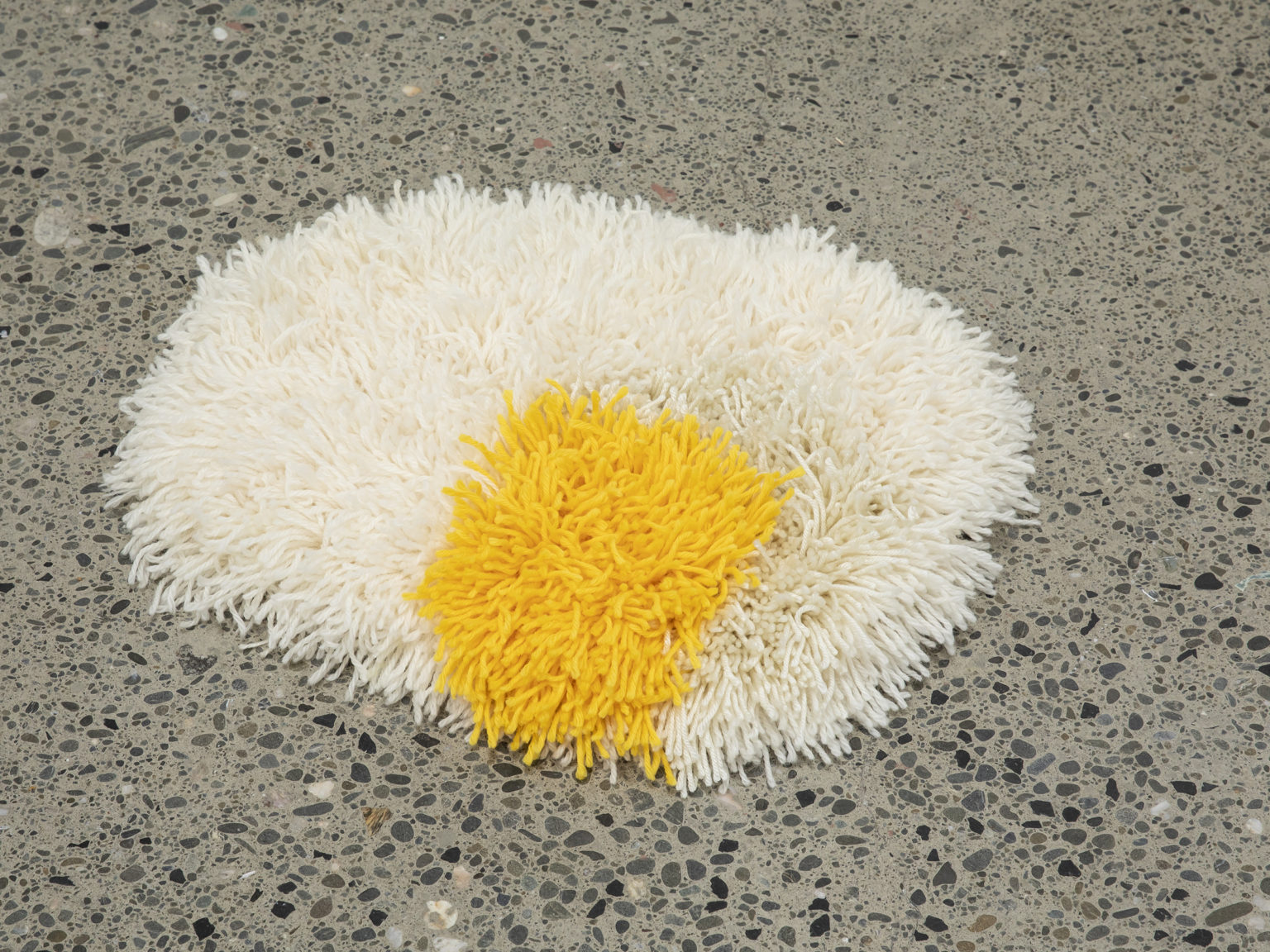
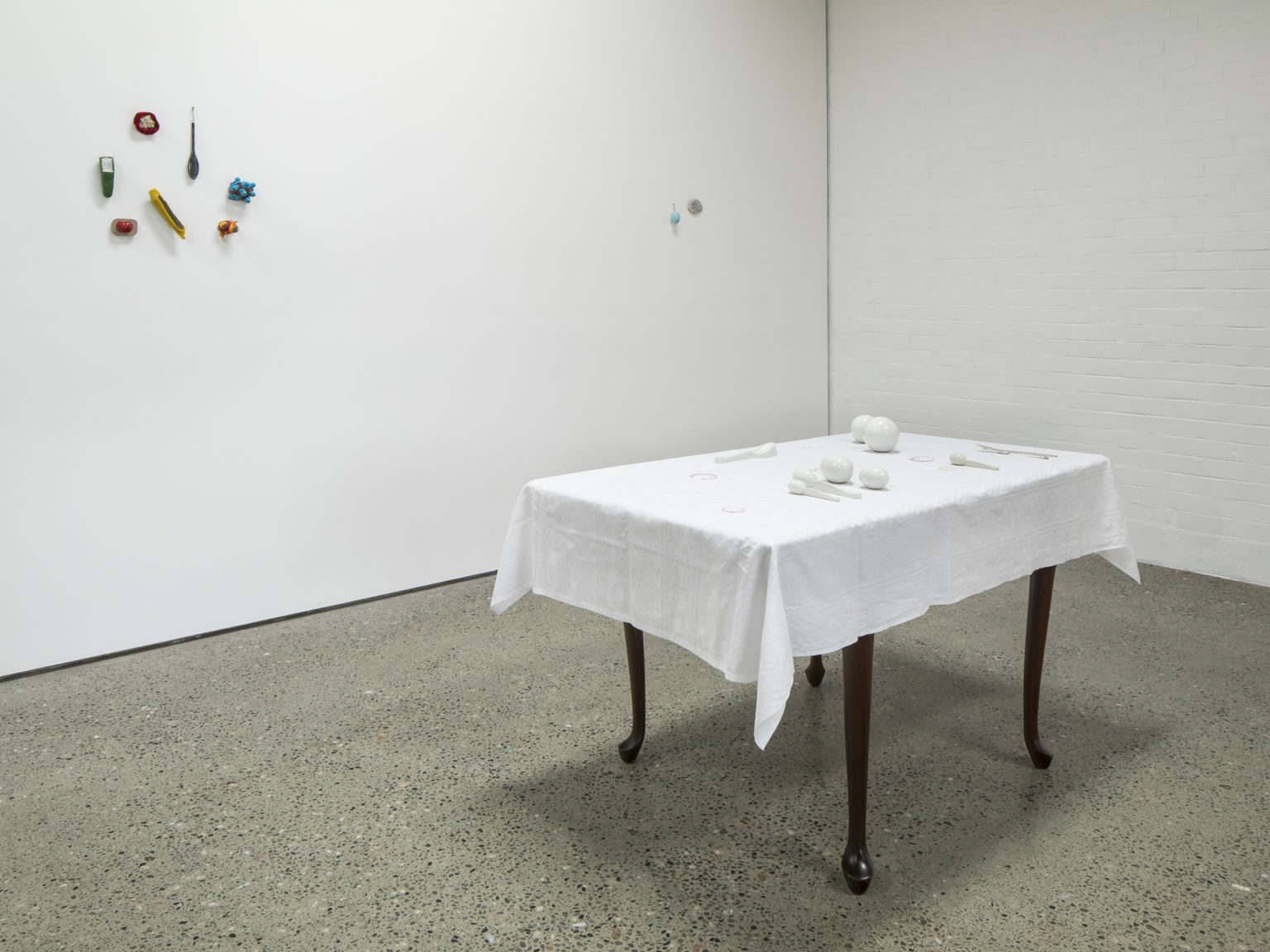
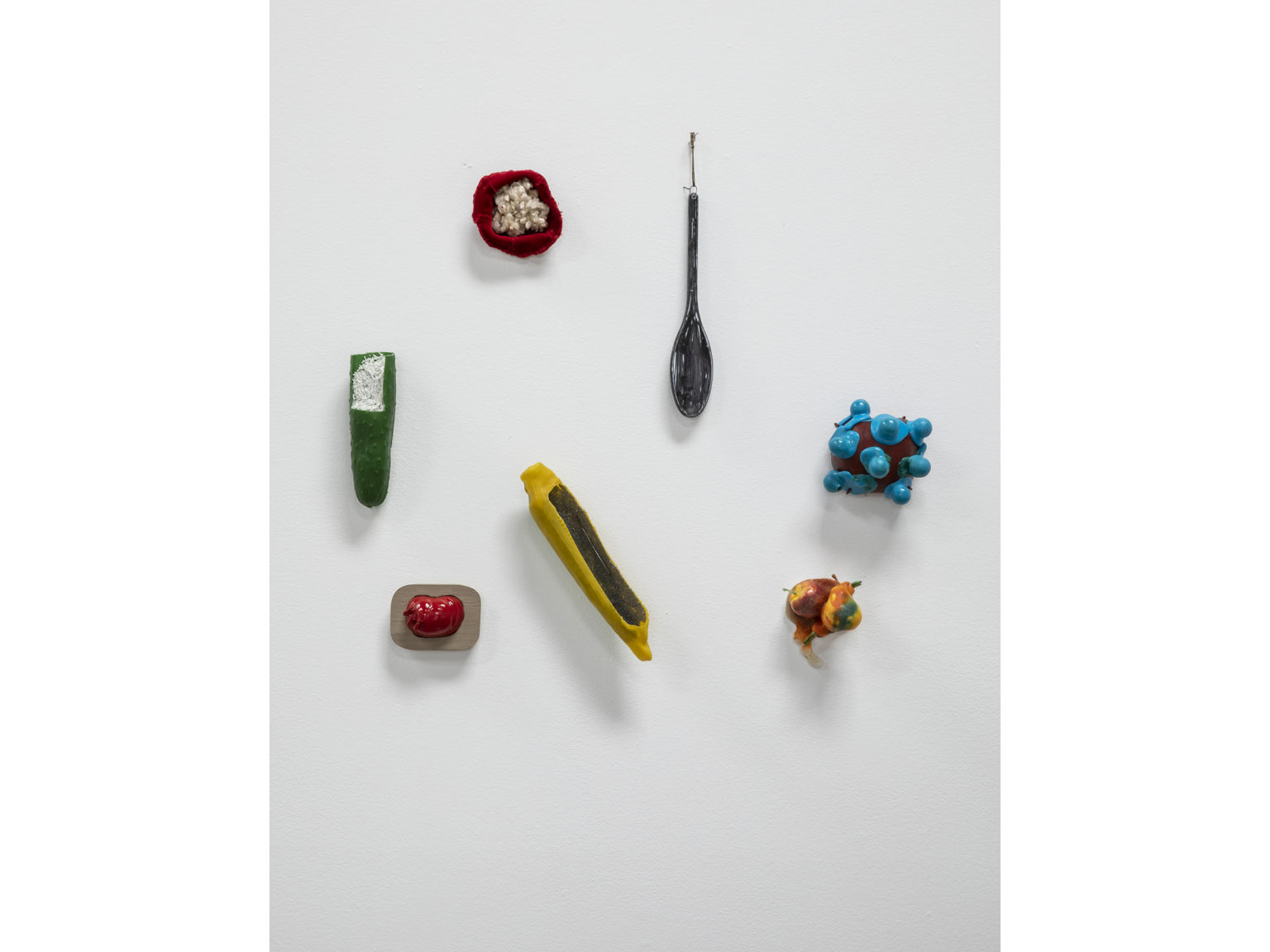
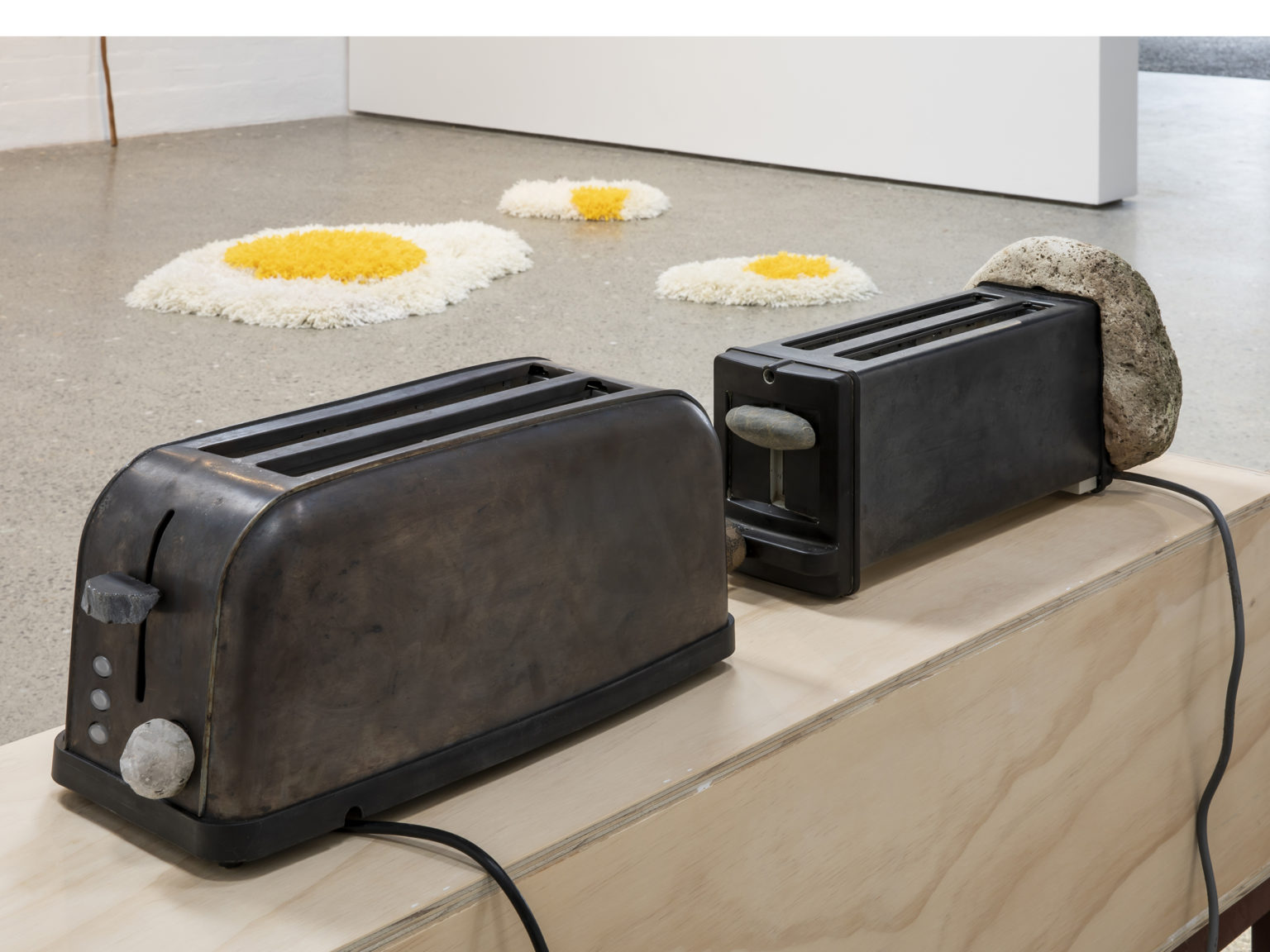
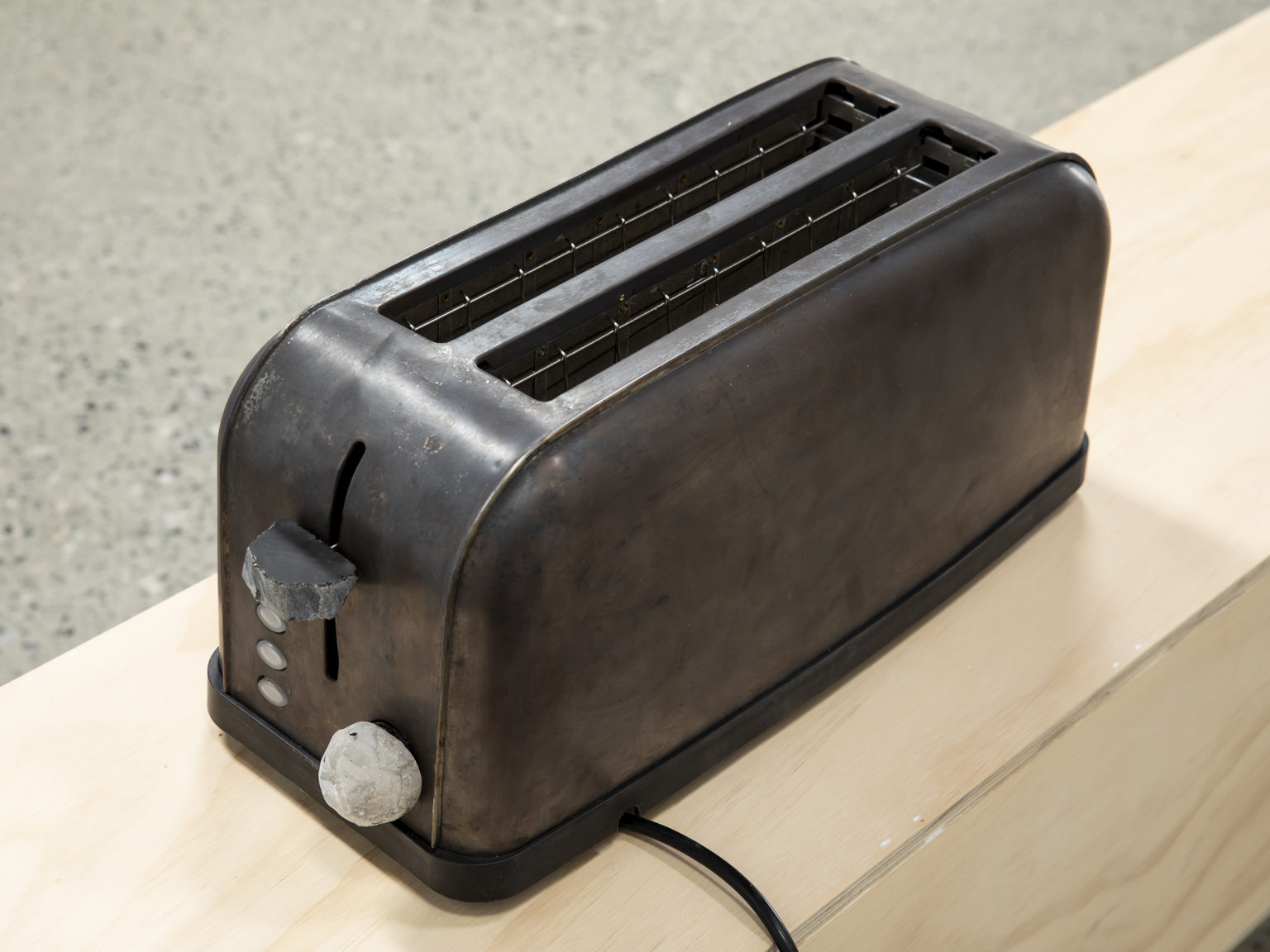
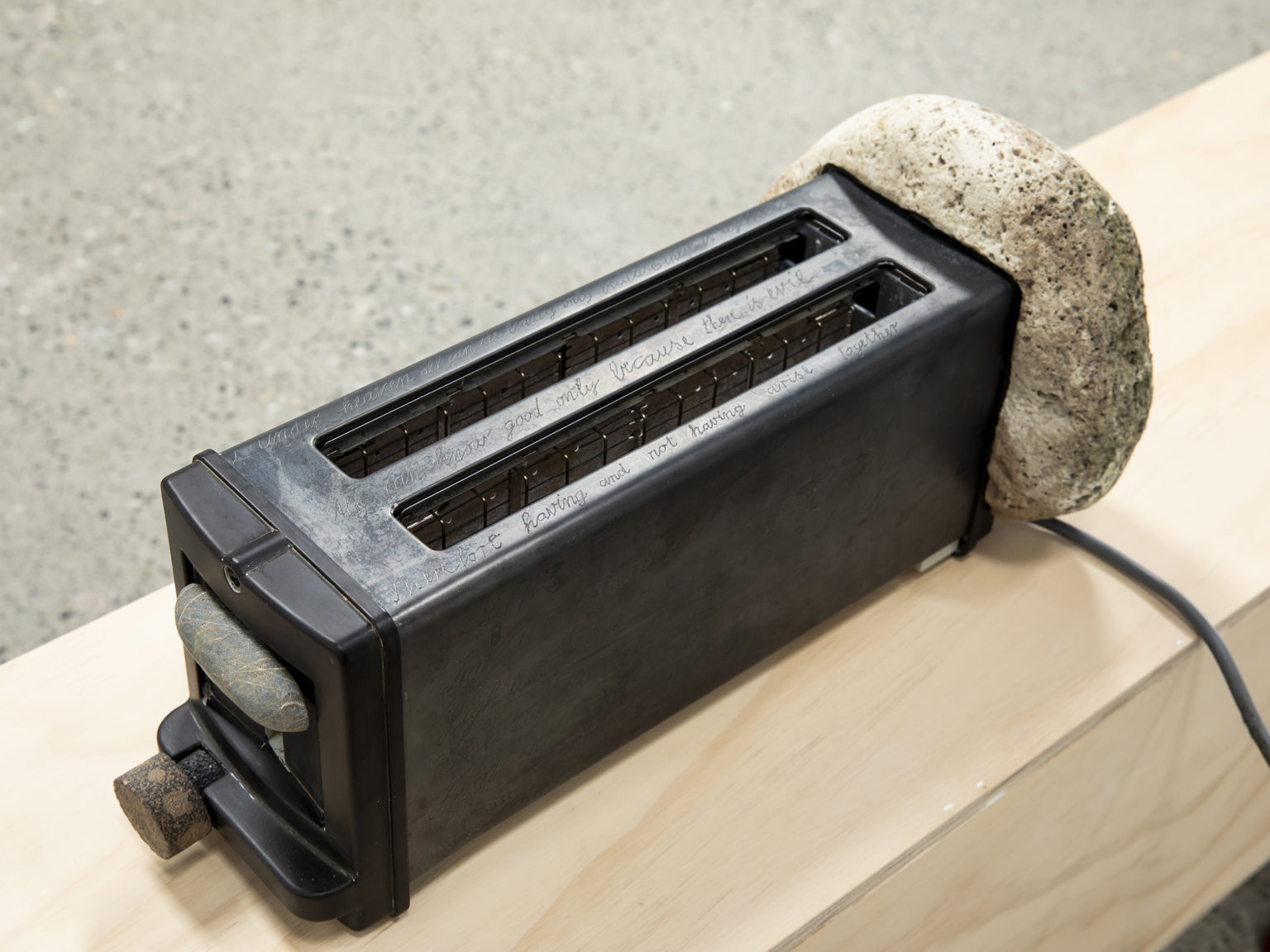
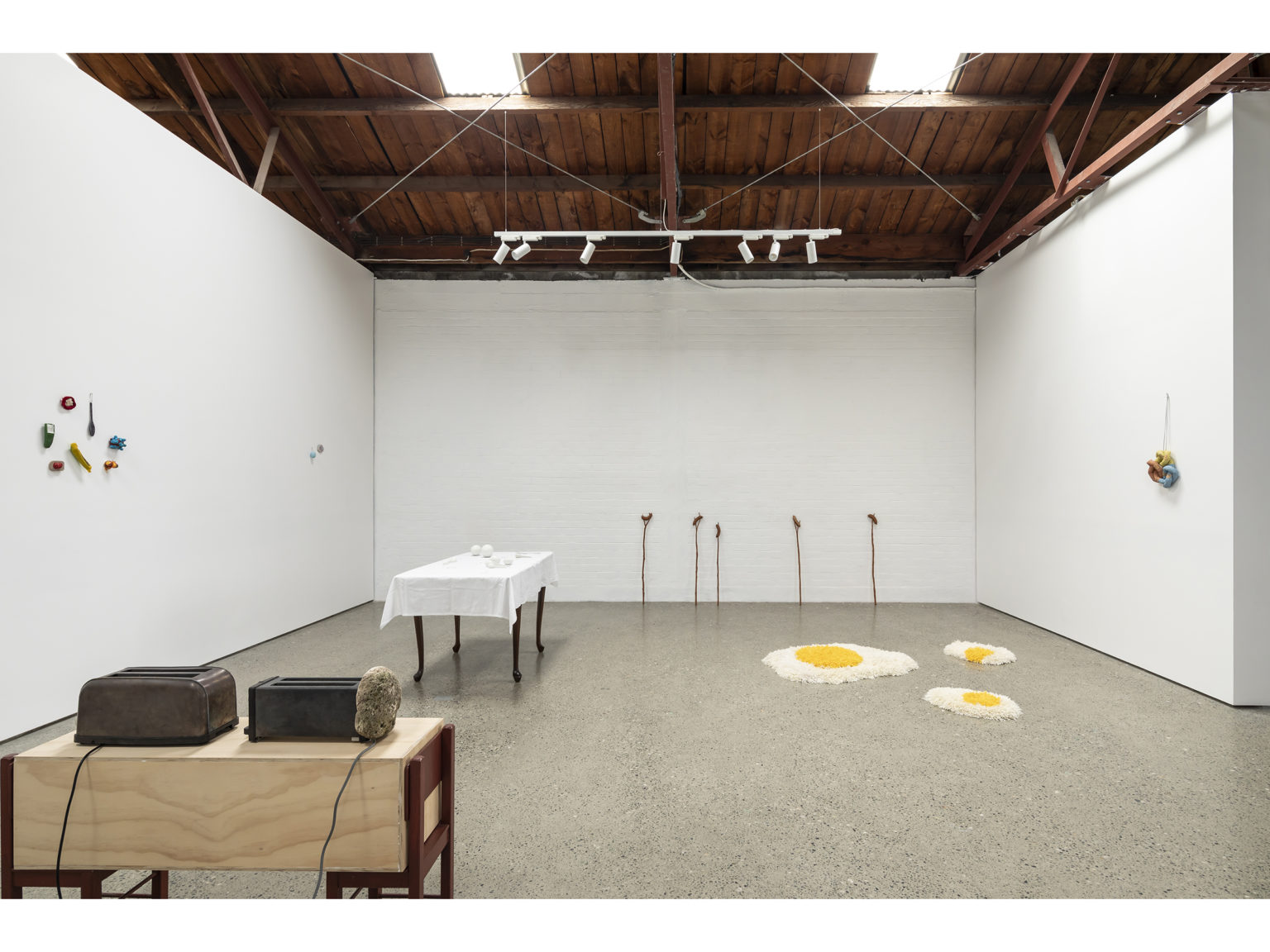
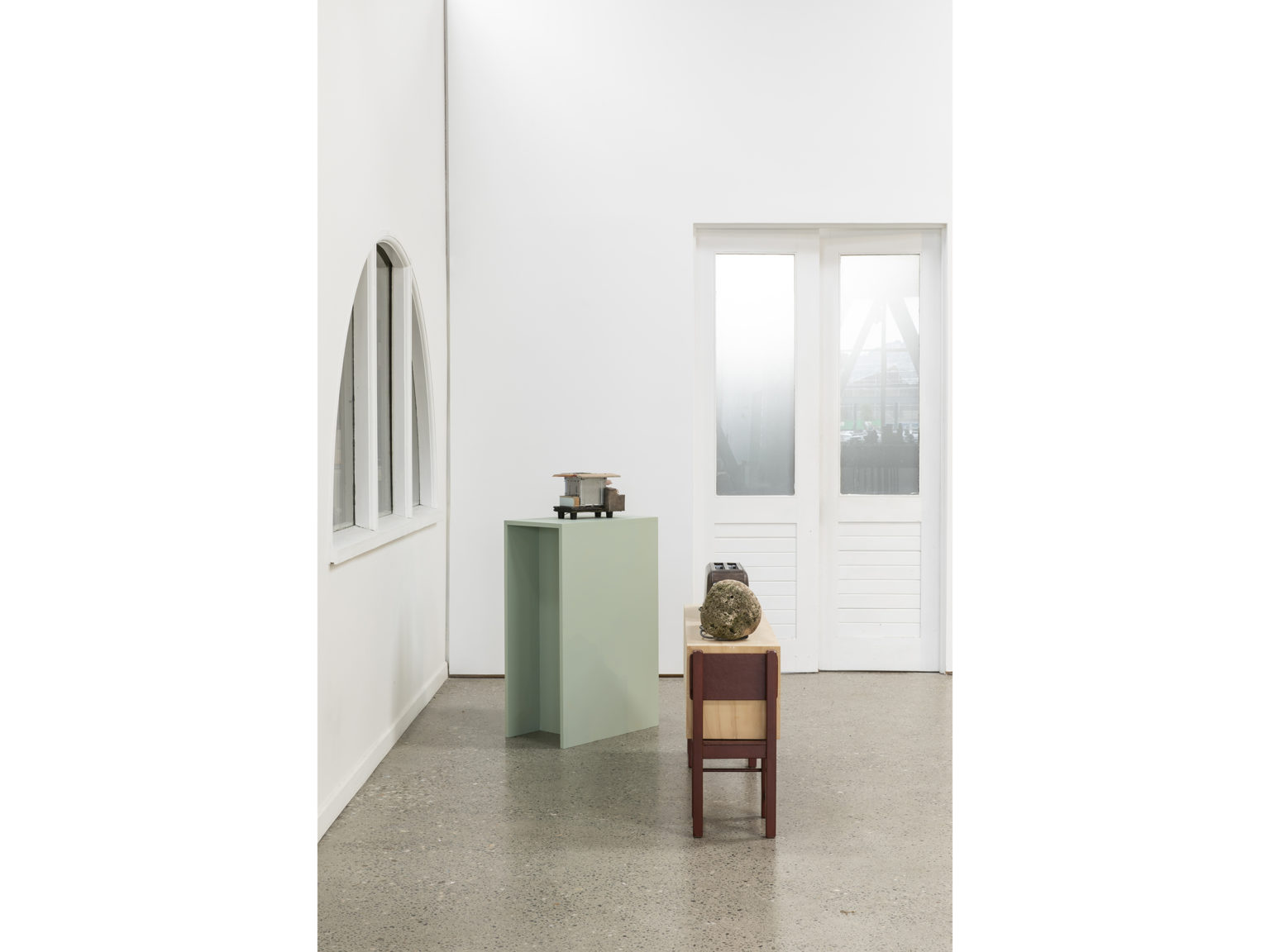
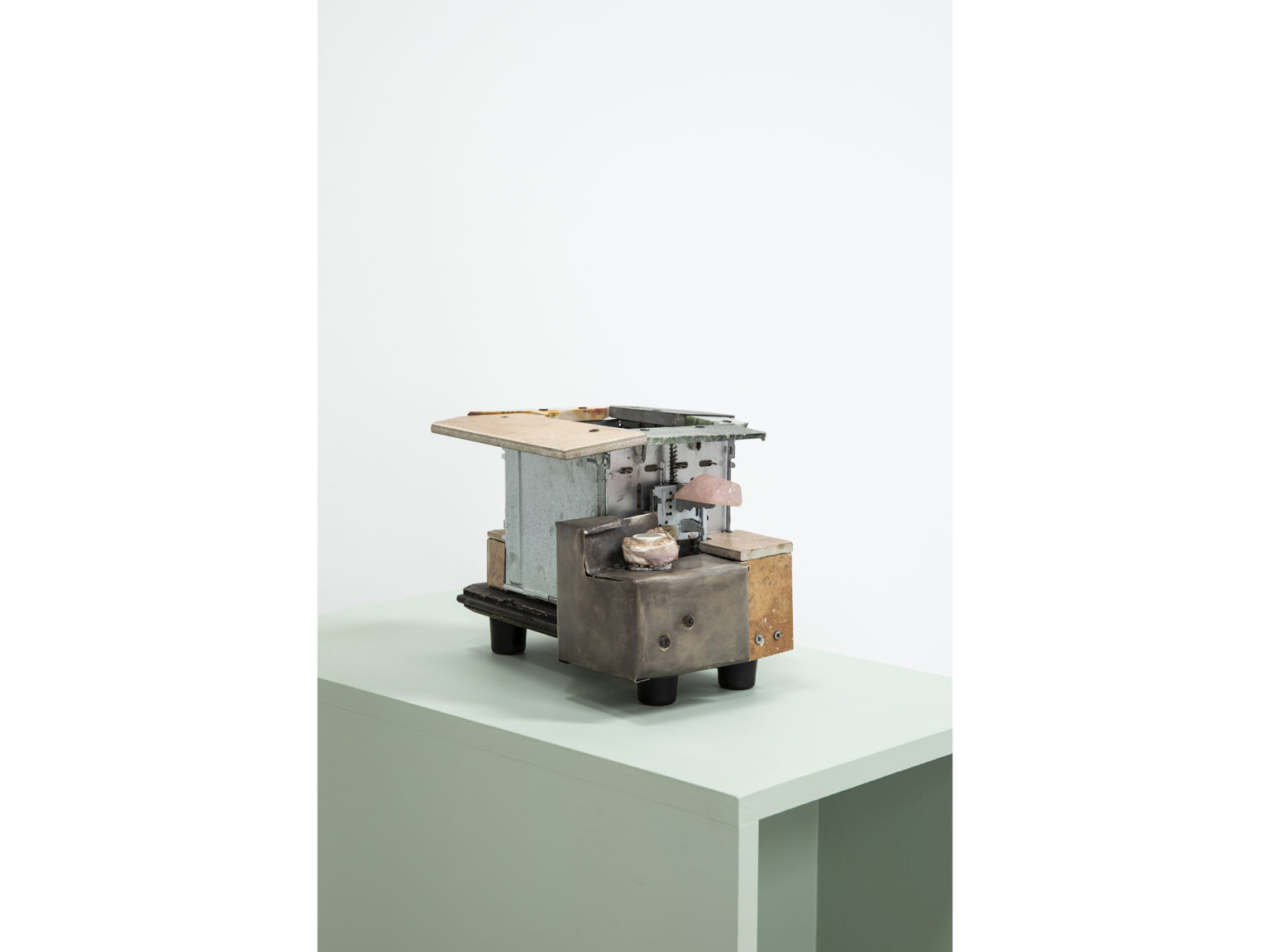
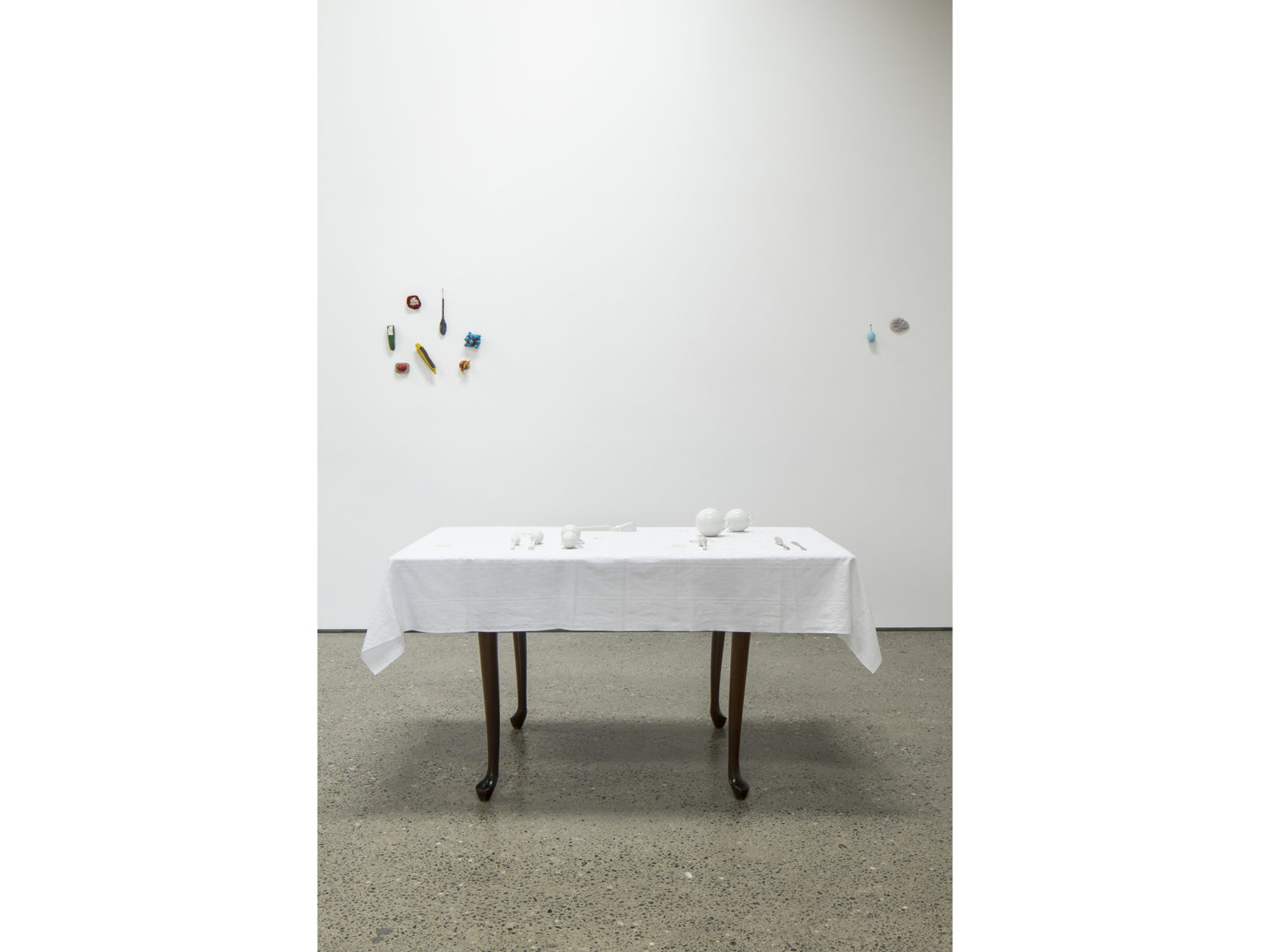
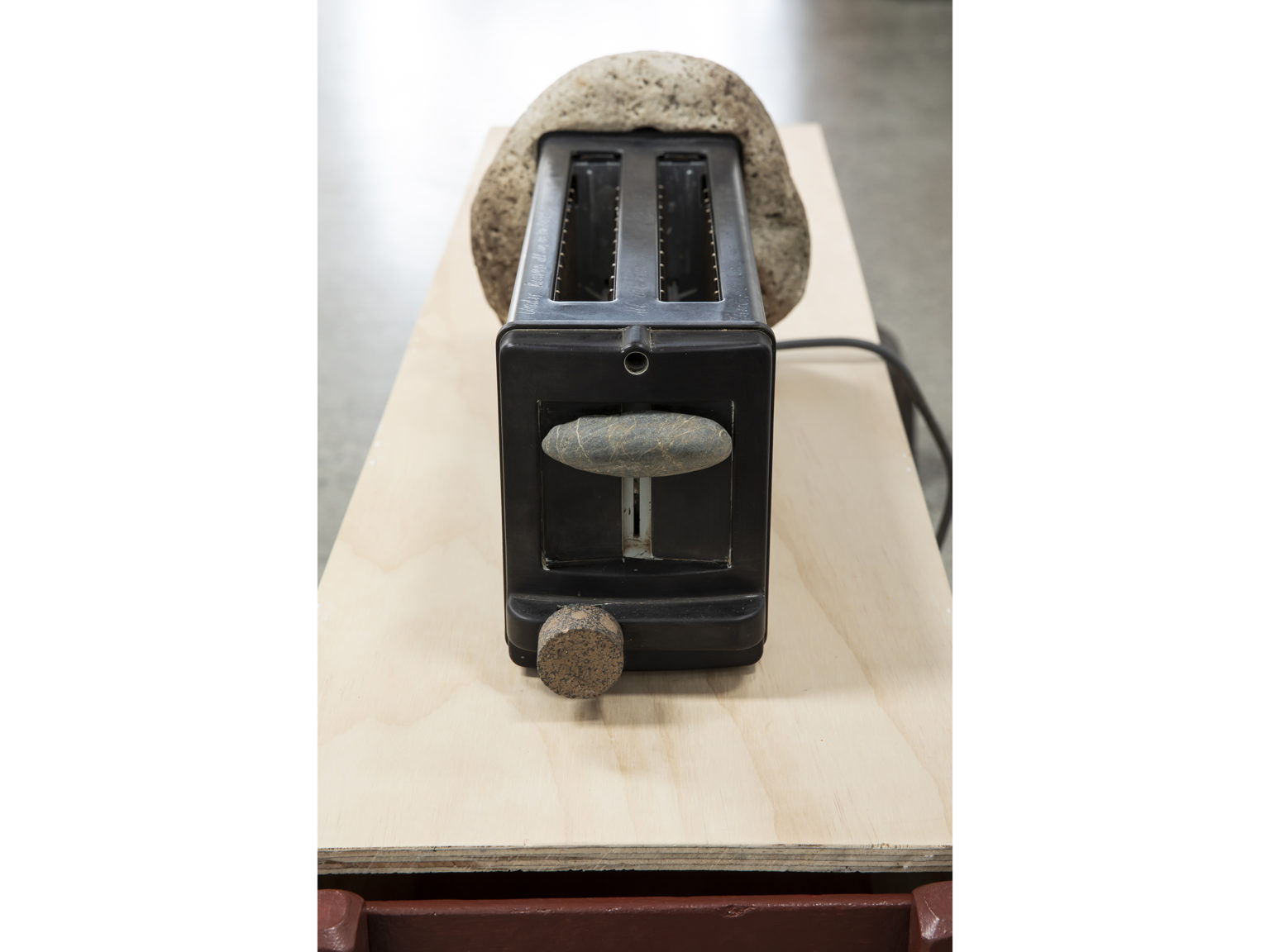
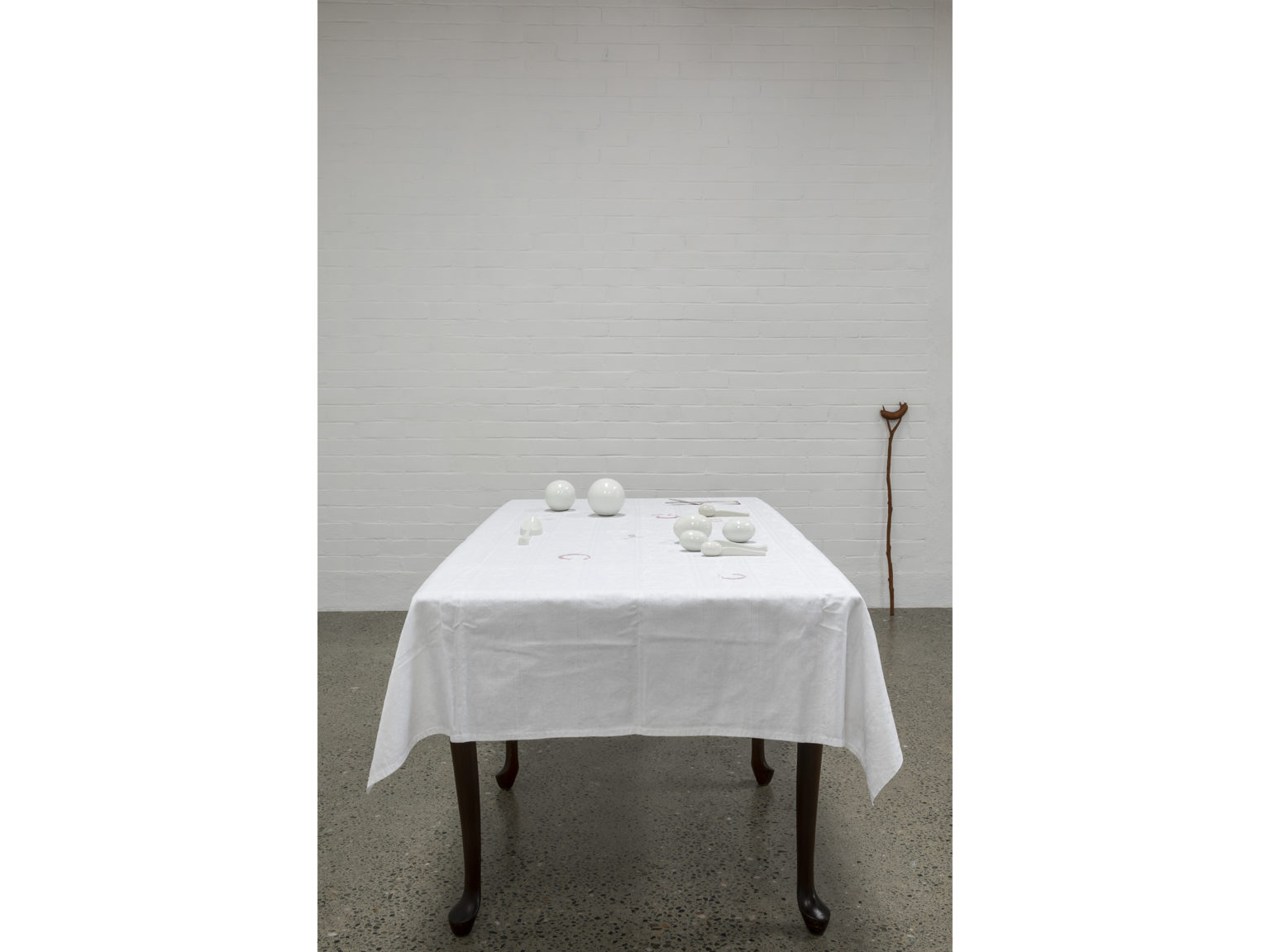
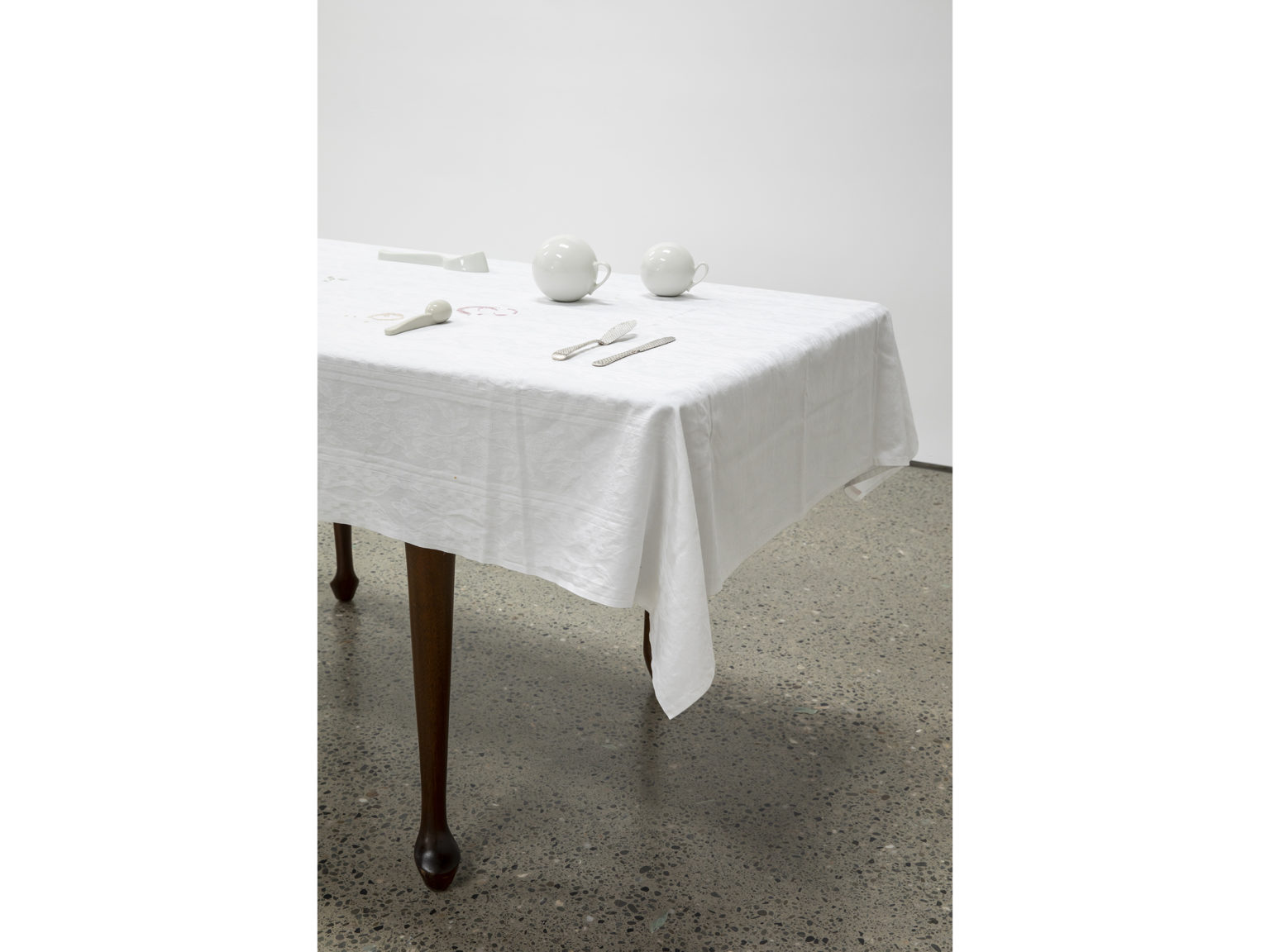
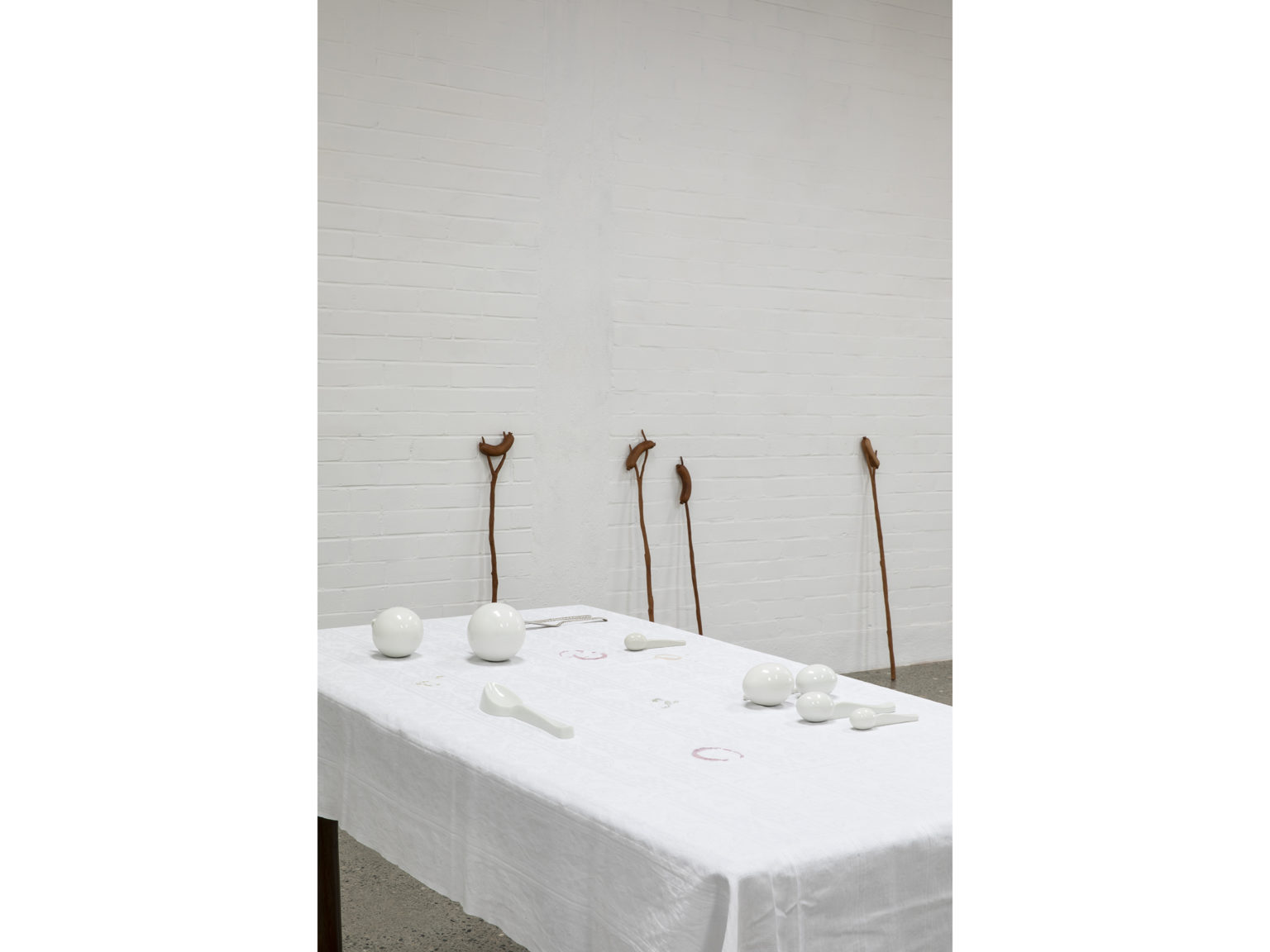
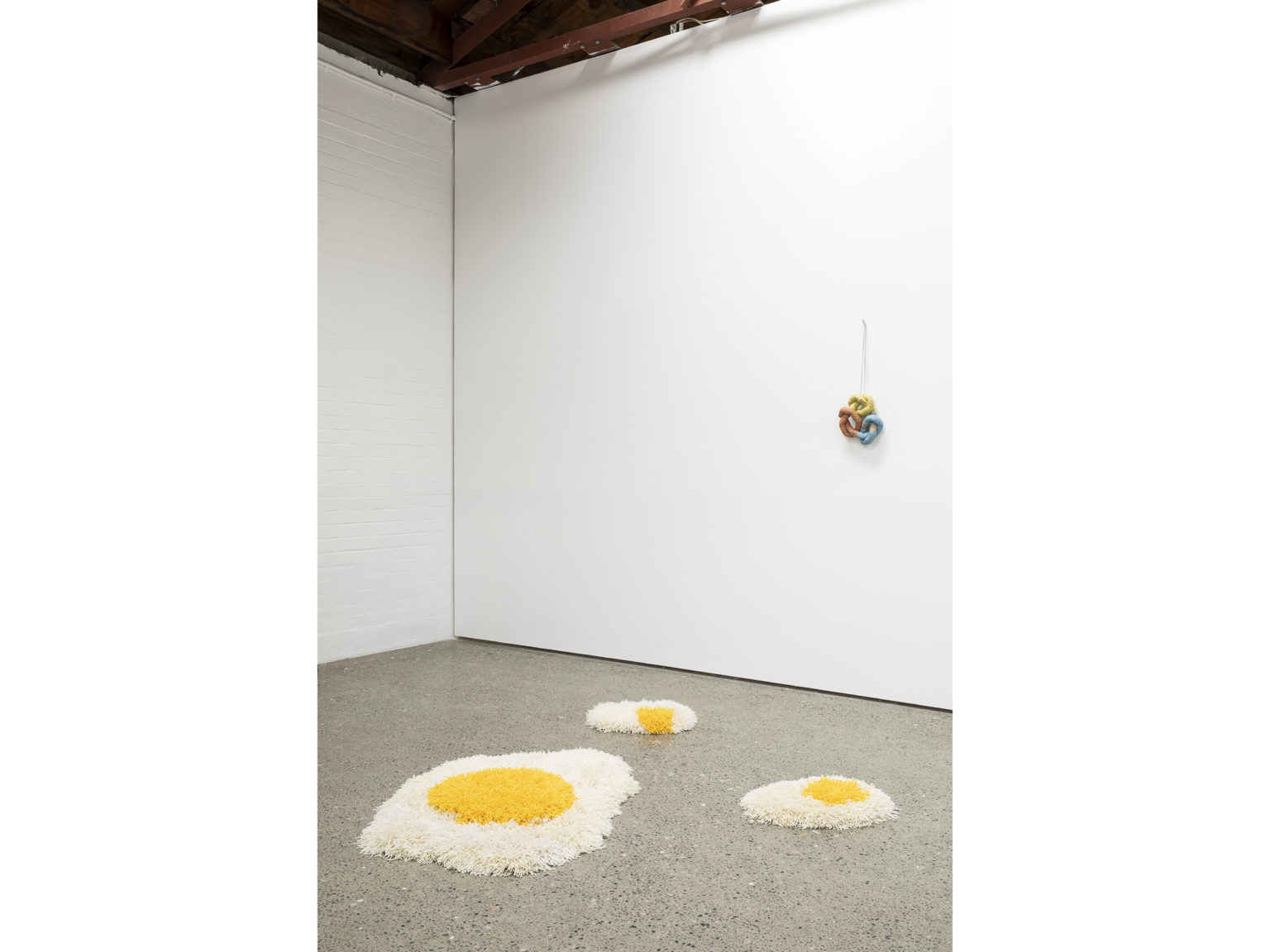


1 / 30
Installation view
OVER EASY
$POA | ENQUIRE
2 / 30
Richard Maloy
OVER EASY
As Many Structures As I Can Make & Yellow Grotto
2008
Video. 45 mins 31 secs & 45 mins 17 secs
$POA | ENQUIRE
3 / 30
Steve Carr
OVER EASY
Sausages on Sticks
2007
Cherry wood
From 920-1010 x 140mm
$POA | SOLD
4 / 30
Steve Carr
OVER EASY
Sausages on Sticks
2007
Cherry wood
920 x 60mm
$POA | SOLD
5 / 30
Steve Carr
OVER EASY
Sausages on Sticks
2007
Cherry wood
1010 x 140mm
$POA | SOLD
6 / 30
Steve Carr
OVER EASY
Sausages on Sticks
2007
Cherry wood
980 x 90mm
$POA | SOLD
7 / 30
Steve Carr
OVER EASY
Sausages on Sticks
2007
Cherry wood
1010 x 120mm
$POA | SOLD
8 / 30
Steve Carr
OVER EASY
Sausages on Sticks
2007
Cherry wood
$POA | SOLD
9 / 30
Manon van Kouswijk
OVER EASY
Tablecloth & Room Service
1998-2004
Hand embroidered cotton tablecloth, porcelain objects, etched silver plated fish knives
$POA | ENQUIRE
10 / 30
Manon van Kouswijk
OVER EASY
Tablecloth & Room Service
1998-2004
Hand embroidered cotton tablecloth, porcelain objects
$POA | ENQUIRE
11 / 30
Manon van Kouswijk & Steve Carr
OVER EASY
Installation view
$POA | ENQUIRE
12 / 30
Installation view
OVER EASY
$POA | ENQUIRE
13 / 30
Lisa Walker
OVER EASY
Pendant
2021
Fabric, paint, thread, stuffing
255 x 230 x 55mm
$POA | ENQUIRE
14 / 30
Jacquelyn Greenbank
OVER EASY
Poached
2021
Mixed fibre
1170 x 820mm
$POA | SOLD
15 / 30
Jacquelyn Greenbank
OVER EASY
Baked
2021
Mixed fibre
540 x 430mm
$POA | SOLD
16 / 30
Jacquelyn Greenbank
OVER EASY
Sunny Side Up
2021
Mixed fibre
520 x 440mm
$POA | SOLD
17 / 30
Lisa Walker & Manon van Kouswijk
OVER EASY
$POA | ENQUIRE
18 / 30
Lisa Walker
OVER EASY
Brooches
2002-2007
Mixed media
$POA | ENQUIRE
19 / 30
Karl Fritsch
OVER EASY
Toasters
2020
Toasters, mixed media
$POA | ENQUIRE
20 / 30
Karl Fritsch
OVER EASY
Toaster
2020
Toaster, mixed media
$POA | ENQUIRE
21 / 30
Karl Fritsch
OVER EASY
Taoist Toaster
2020
Toaster, mixed media
$POA | ENQUIRE
22 / 30
Installation view
OVER EASY
$POA | ENQUIRE
23 / 30
Karl Fritsch
OVER EASY
$POA | ENQUIRE
24 / 30
Karl Fritsch
OVER EASY
Toaster
2020
Toaster, various rocks, mixed media
$POA | ENQUIRE
25 / 30
Lisa Walker & Manon van Kouswijk
OVER EASY
$POA | ENQUIRE
26 / 30
Karl Fritsch
OVER EASY
Toaster
2020
Toaster, mixed media
$POA | ENQUIRE
27 / 30
Manon van Kouswijk
OVER EASY
Tablecloth & Room Service
1998-2004
$POA | ENQUIRE
28 / 30
Manon van Kouswijk
OVER EASY
Tablecloth & Room Service
1998-2004
Hand embroidered cotton tablecloth, porcelain objects, etched silver plated fish knives
$POA | ENQUIRE
29 / 30
Manon van Kouswijk & Steve Carr
OVER EASY
$POA | ENQUIRE
30 / 30
Jacquelyn Greenbank & Lisa Walker
OVER EASY
Installation view
$POA | ENQUIRE
OVER EASY
Group Exhibition
10 Mar – 10 Apr 2021
STEVE CARR, KARL FRITSCH, JACQUELYN GREENBANK
MANON VAN KOUSWIJK, RICHARD MALOY, LISA WALKER
There’s more than one way to cook an egg…
“Cuisine reveals its artistic scope if the participants in the cooking-eating experience can free themselves from the visual boundaries of perception; through consumption, food does not vanish but rather changes into something else and even transforms the eater.” [1]
Filippo Marinetti’s Futurist Cookbook was published in 1932, and in it he sought to revolutionise not only what people ate but how they did so. His recipes aspired to absolute originality in food: it’s flavours, processes and presentation. Marinetti encouraged readers to partake of such elaborate delicacies as Immortal Trout: trout stuffed with nuts and wrapped in slices of calves’ liver; Hunting in Heaven: hare cooked slowly in sparkling wine and cocoa powder, and decorated in silver balls recalling the huntsmen’s shot; and Aerofood: olives, fennel and kumquats served with a spray of perfume to the neck, and Bach played from the kitchen. These dishes were designed to offer a new experience of food that was in harmony with contemporary life, and wherein ‘experiment, intelligence and imagination [would] economically take the place of quantity, banality, repetition and expense.’ [2] For Marinetti, culinary imagination (and the consumption of its ‘fruits’) promised freedom of thought and liberation from the constraints of society.
The works in Over Easy might not be wrought with Marinetti’s same politics, but echoes of his enthusiastic interest in eccentric objects and performances of eating are everywhere evident in this show. Manon van Kouswijk‘s tablecloth carries traces of our ritualistic gathering round the table to share food and drink, and is accompanied by a series of uncanny transmogrified utensils. A toaster clad in slabs of stone by Karl Fritsch becomes absurdly covetable. Richard Maloy repurposes butter, exploiting its ability to transform and change states. Another transformation takes place in Steve Carr’s tongue-in-cheek rendition of campfire cooking where carved wooden susages are non-edible and non-sensical. In a similarly playful reversal, Lisa Walker’s oversized Bretzen necklace resists being eaten and instead consumes the body, while Jacquelyn Greenbank presents a comically-proportioned fried egg rug that beckons to be touched. In the work of these artists, our expectations of food and the act of eating are reimagined; rendered strange and therefore seen anew.
[1] Silvia Bottinelli and Margherita d’Ayala Valva, The Taste of Art: Cooking, Food, and Counterculture in Contemporary Practices (Fayetteville: University of Arkansas Press, 2017), p. 4.
[2] Fillipo Marinetti, The Futurist Cookbook (London: Penguin Books, 2014). Trans. Suzanne Brill. Originally published 1932.
